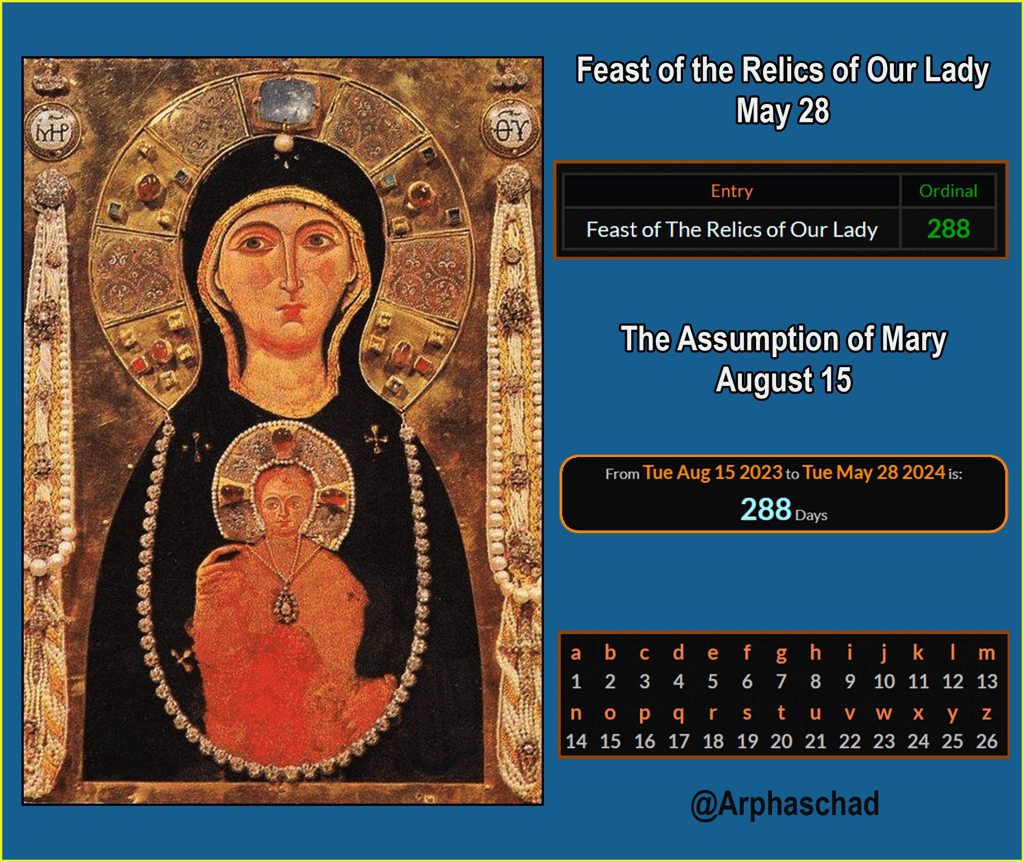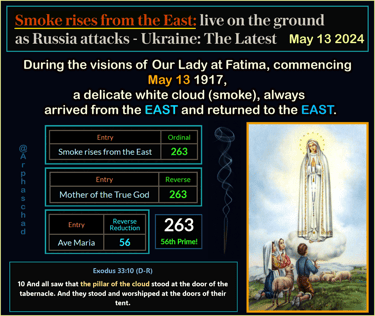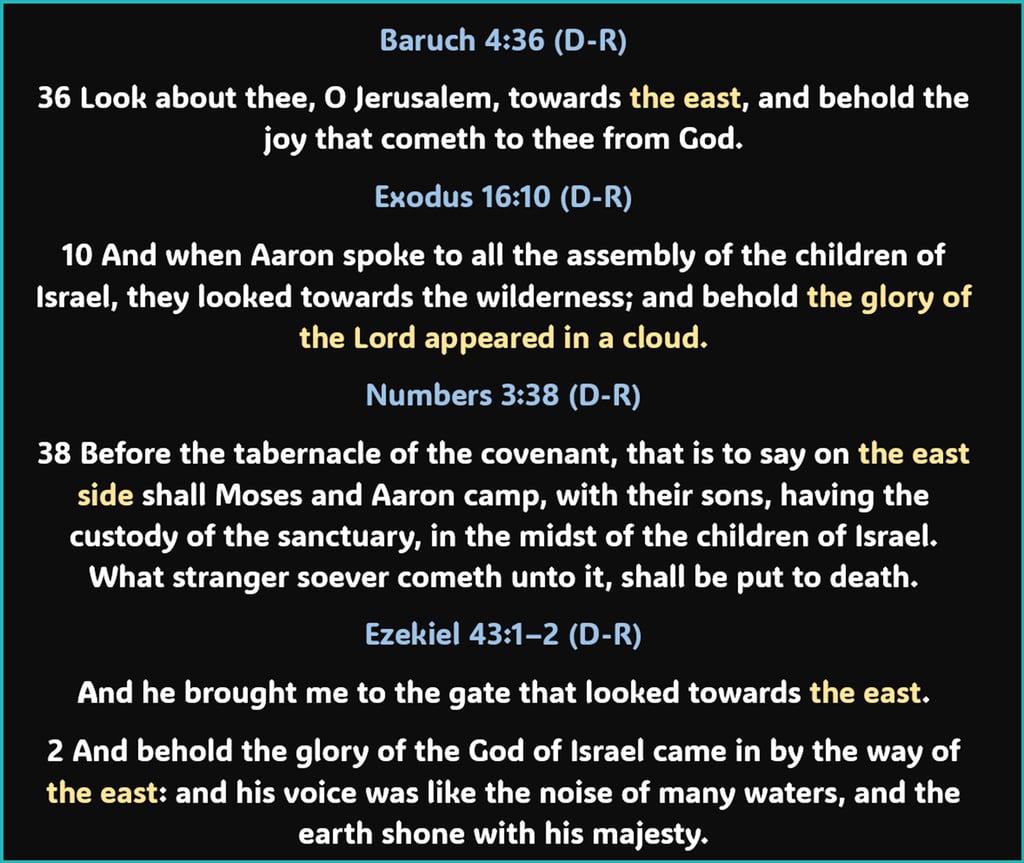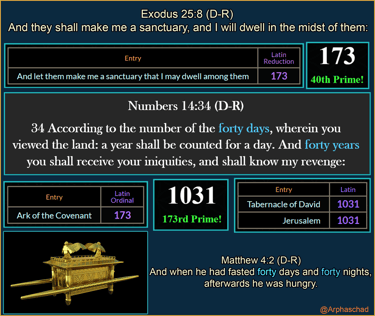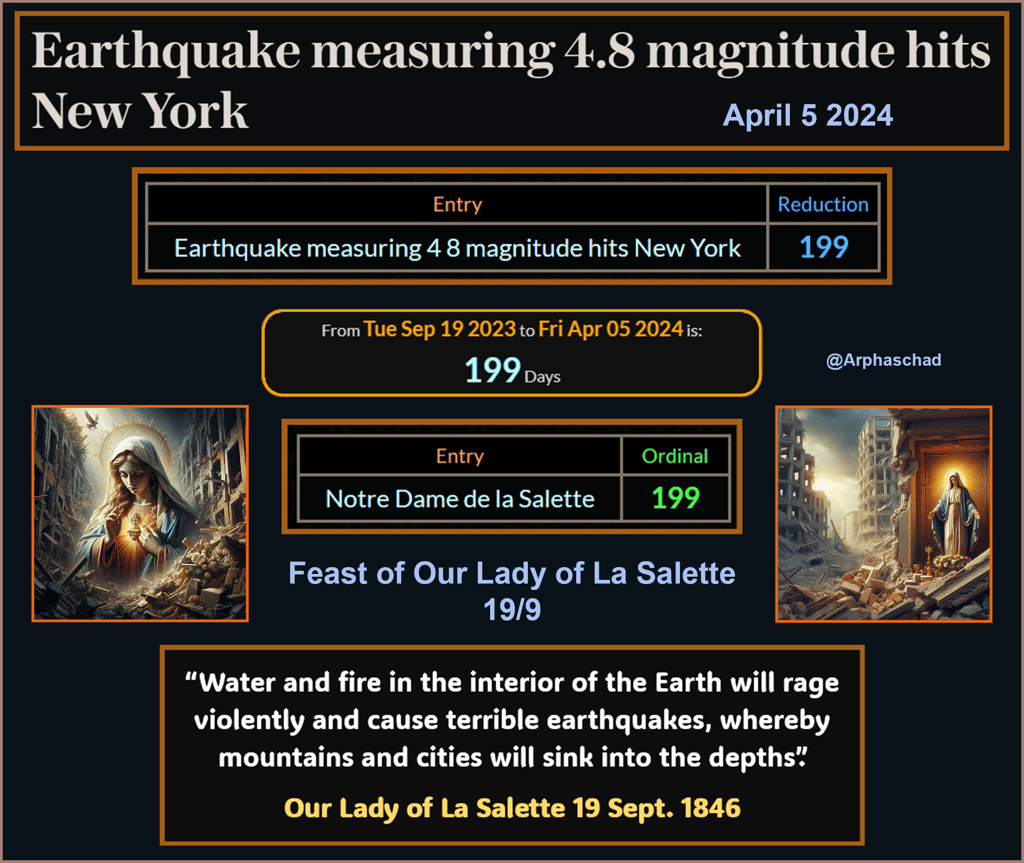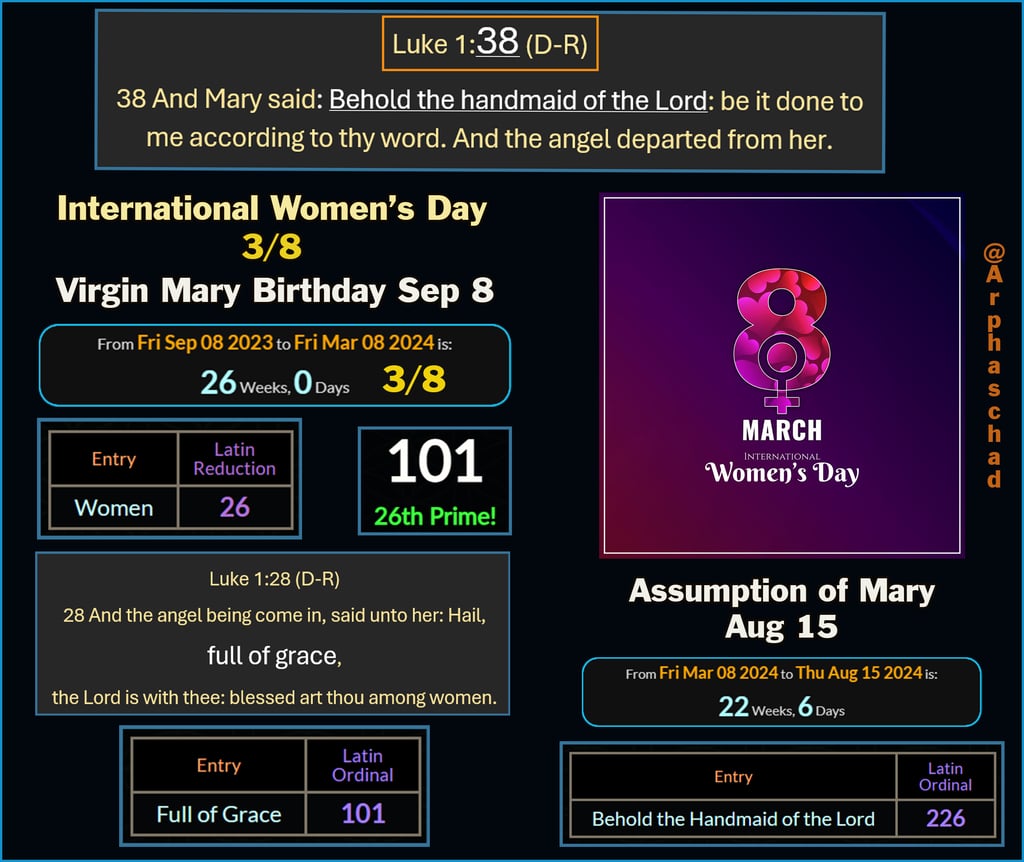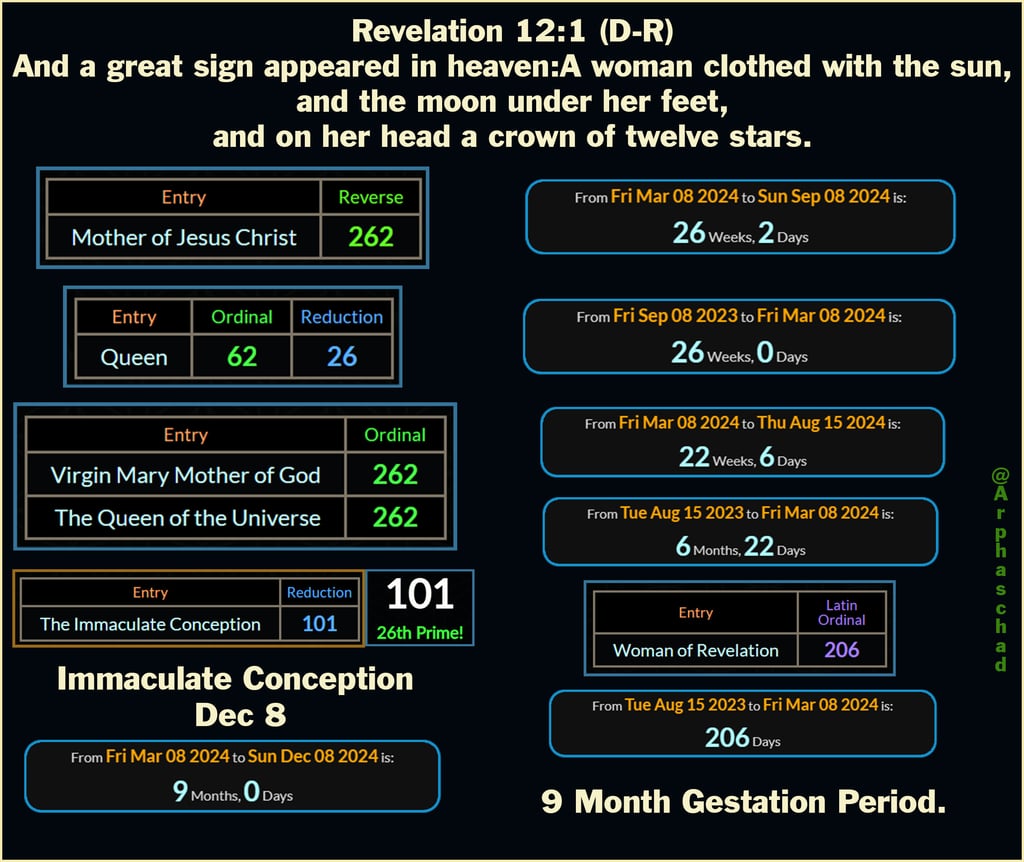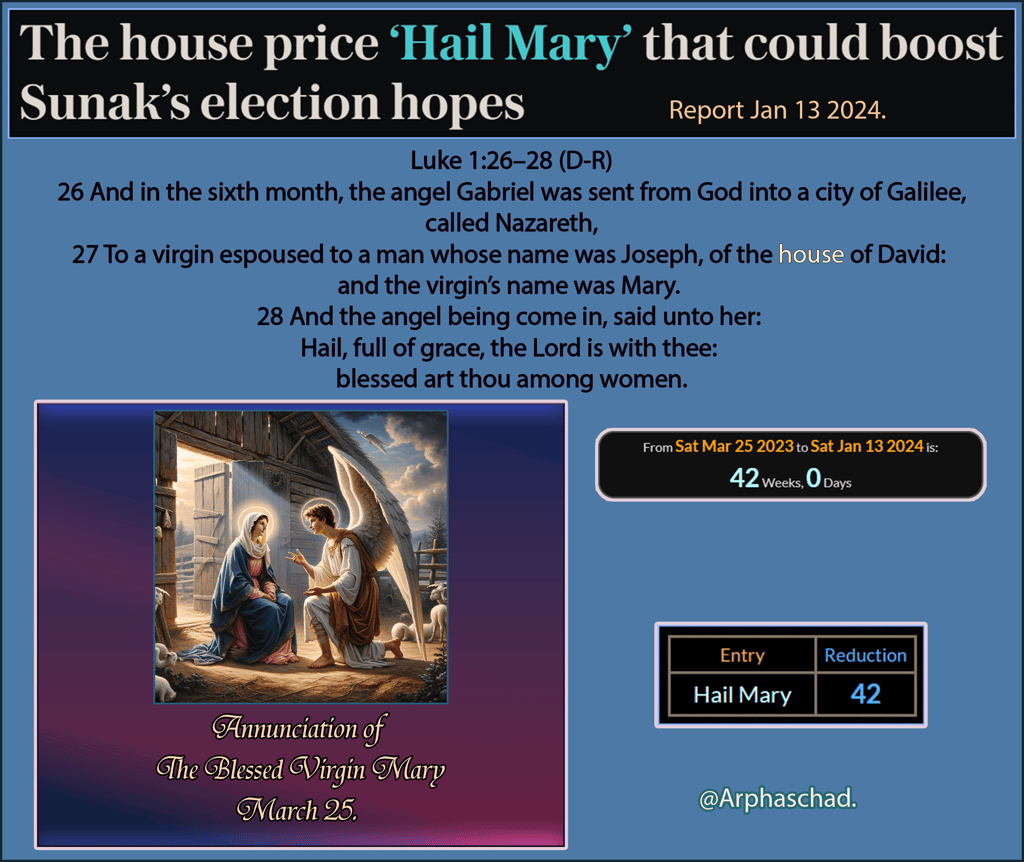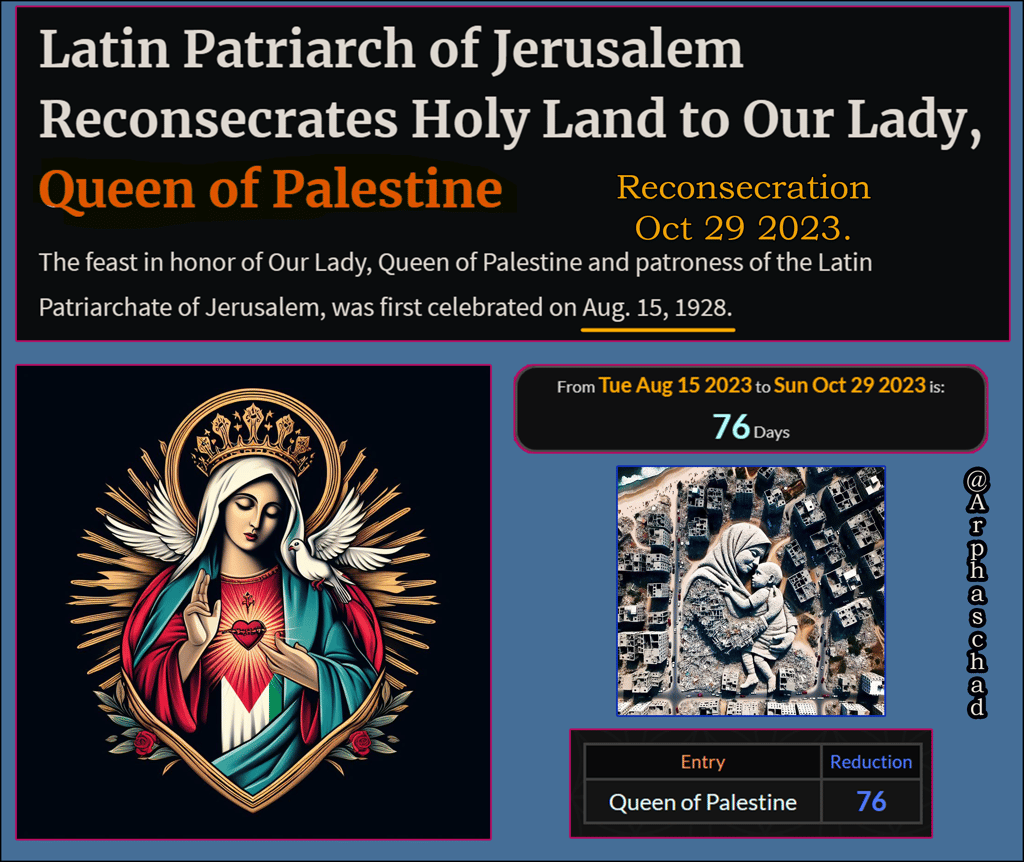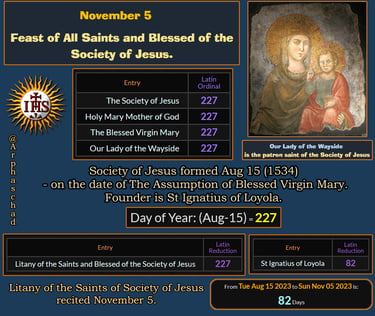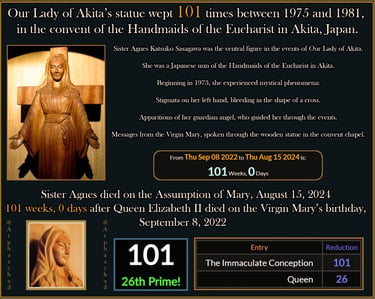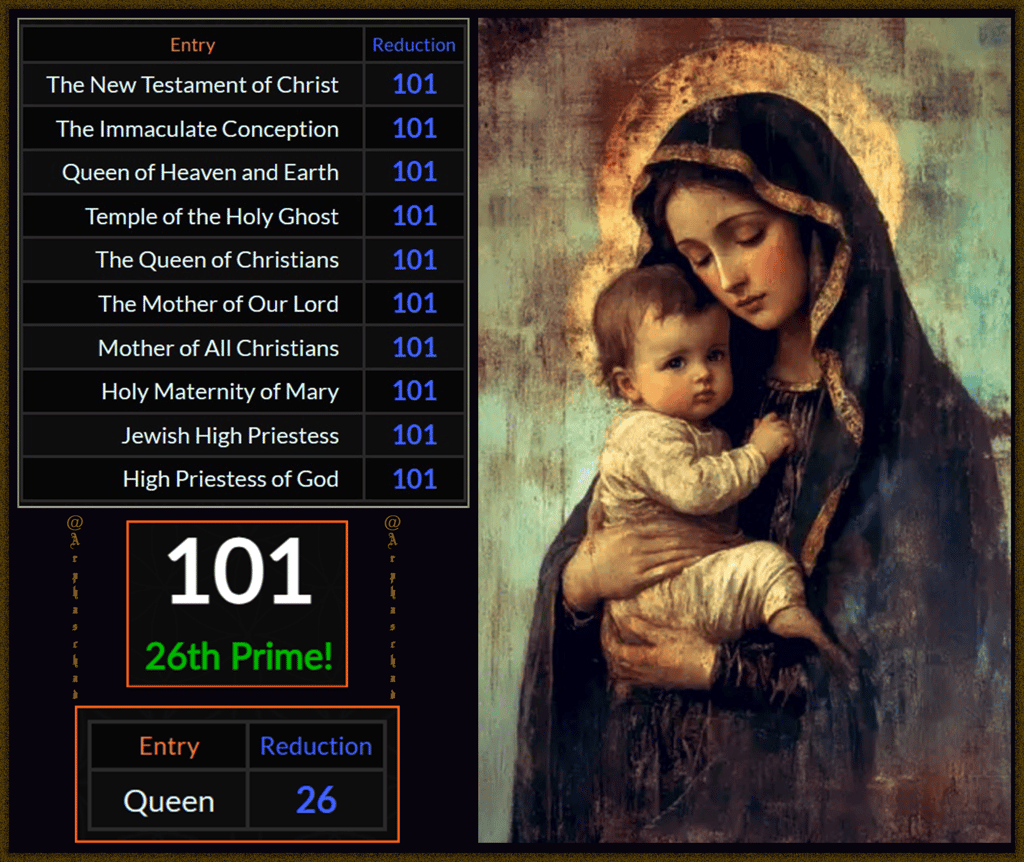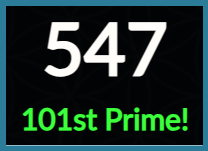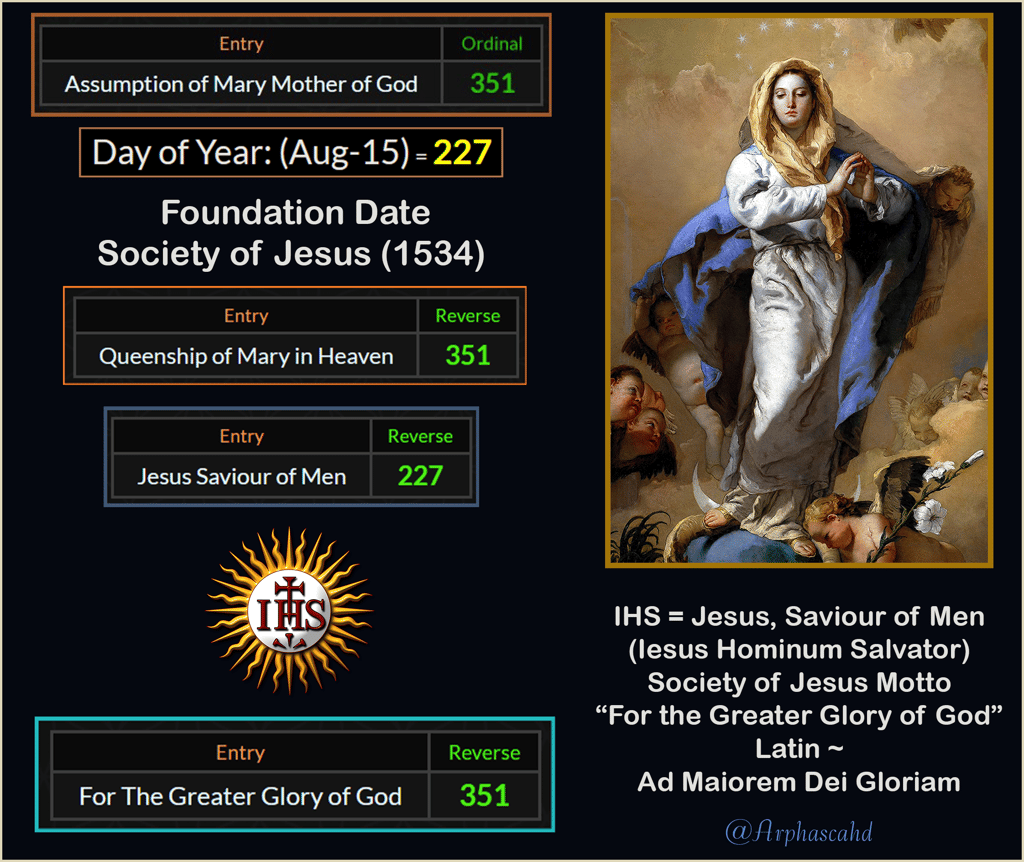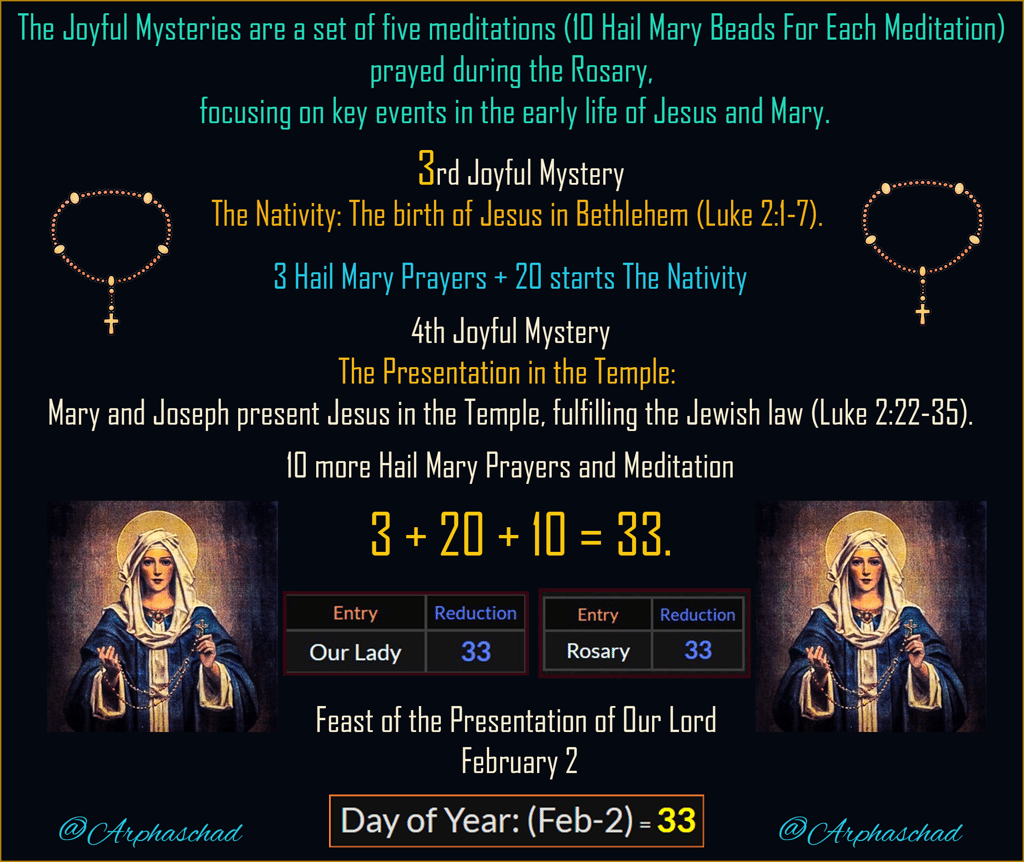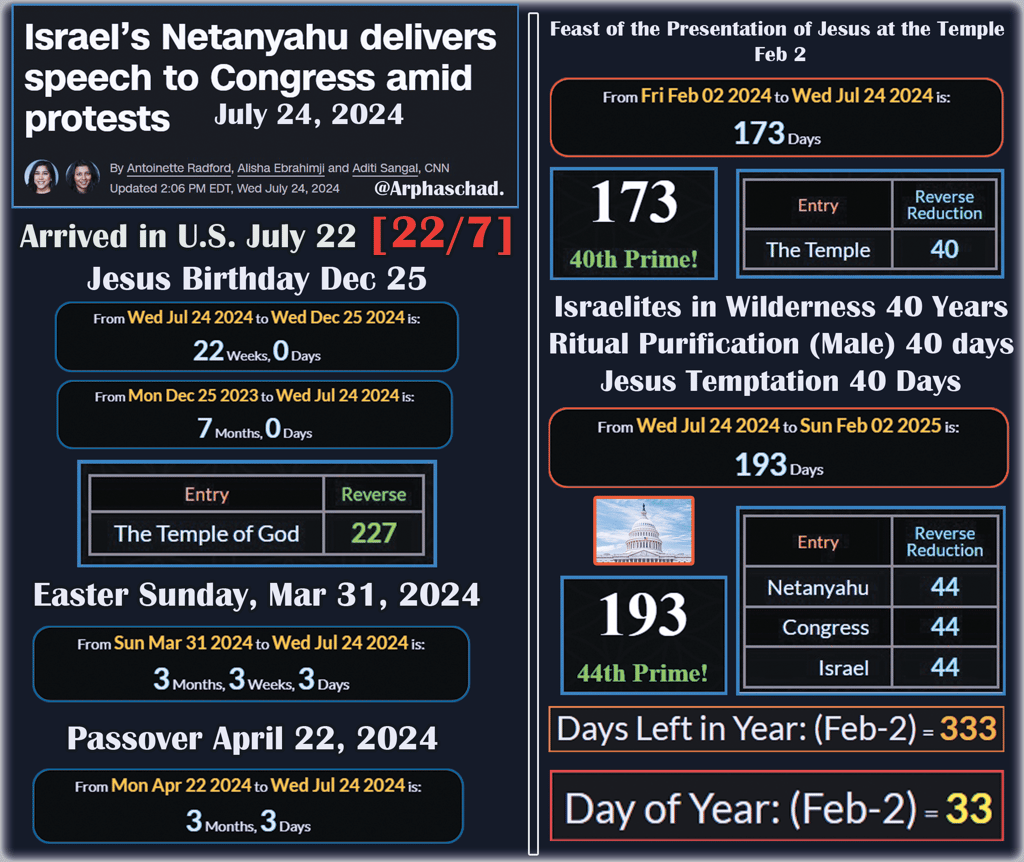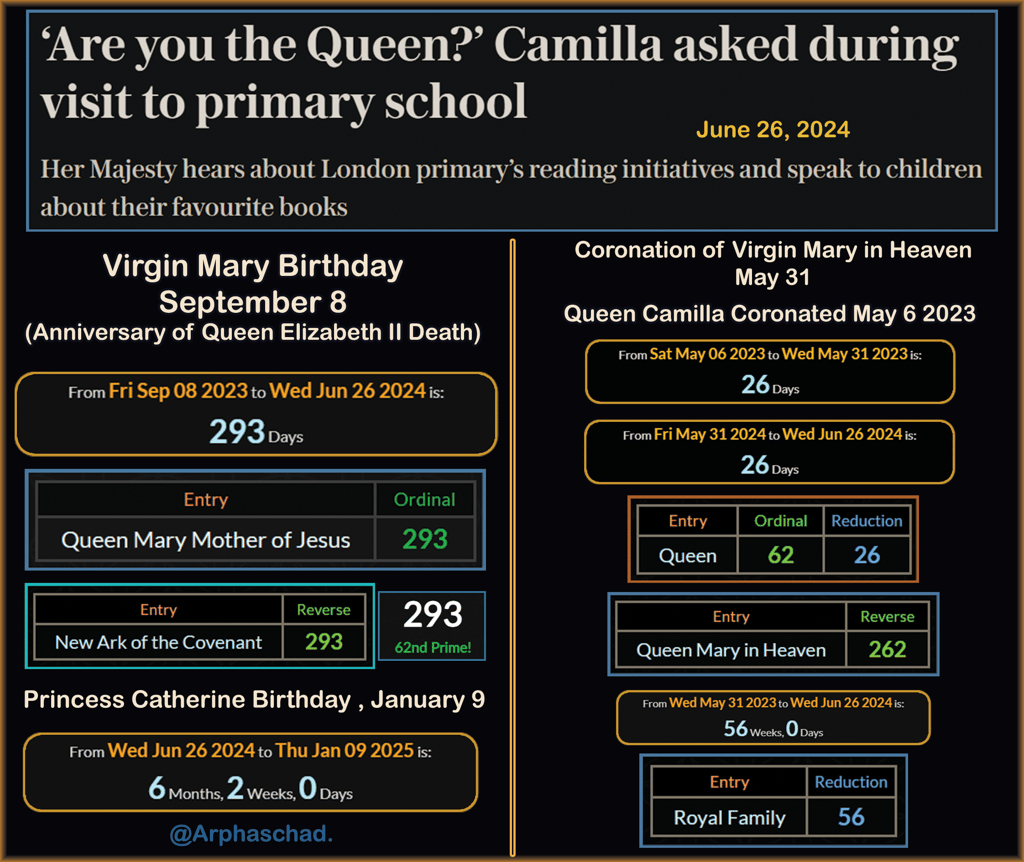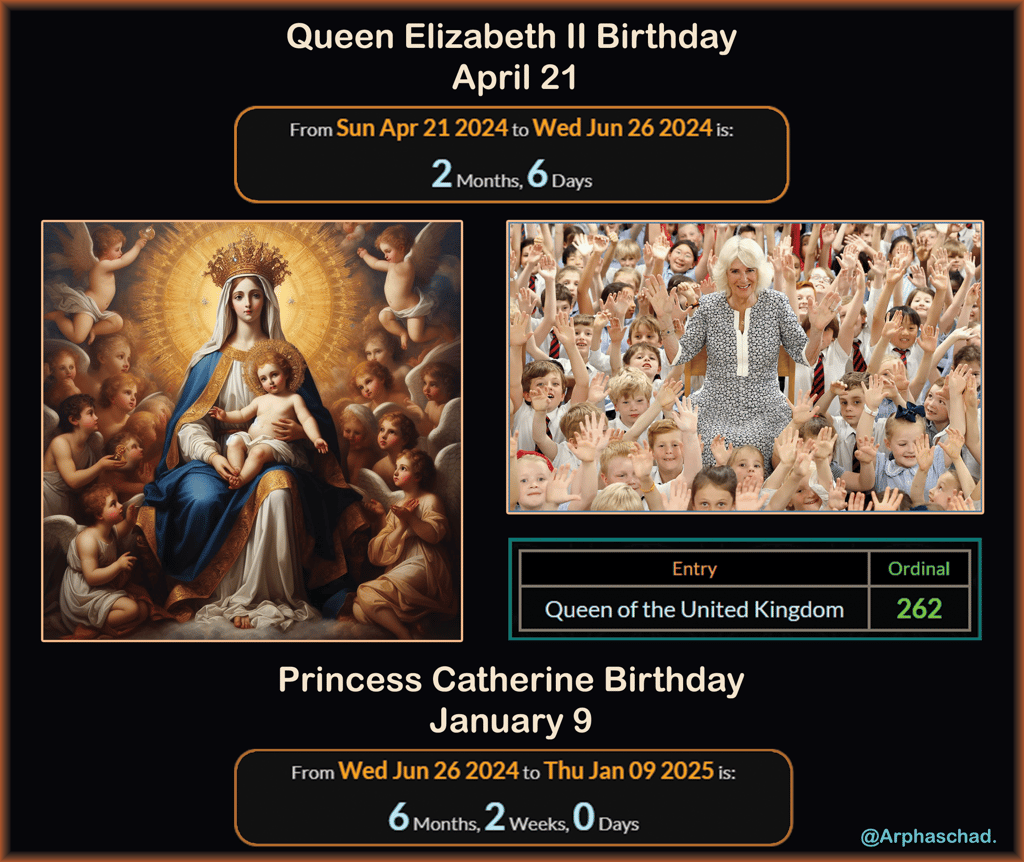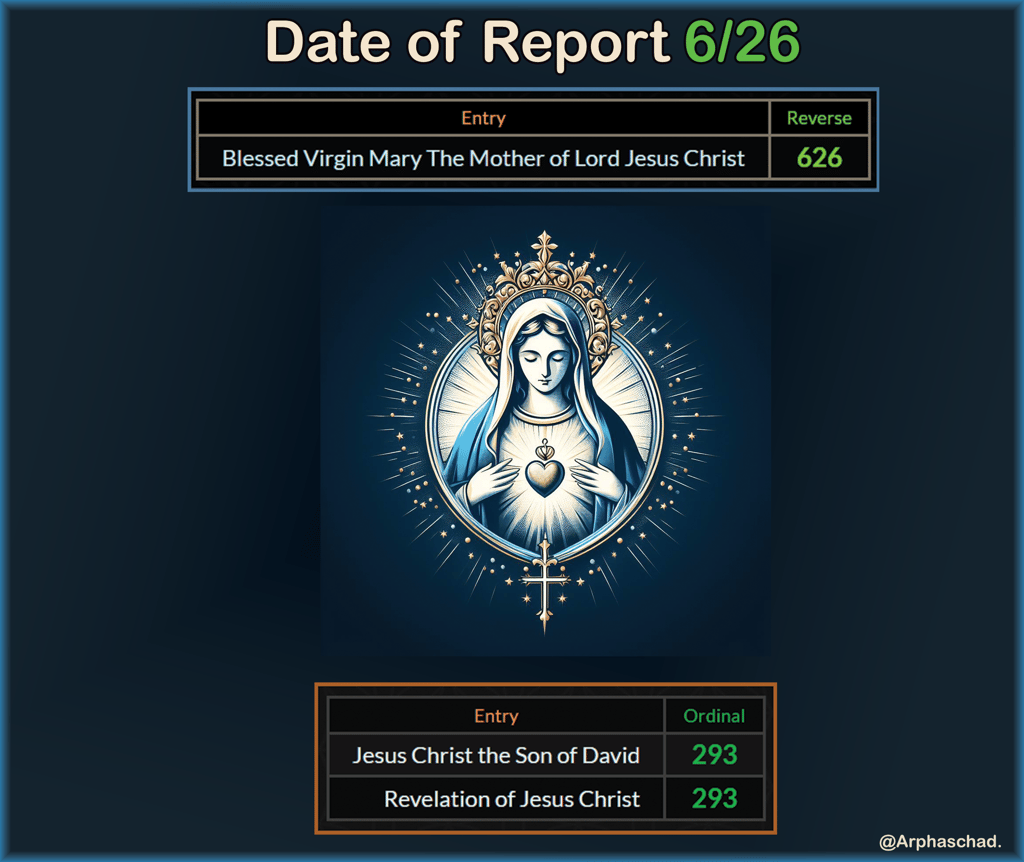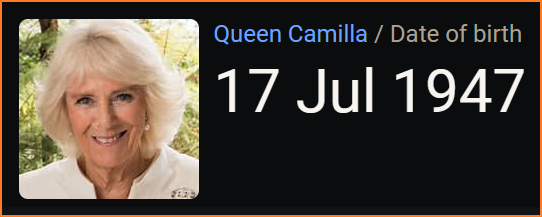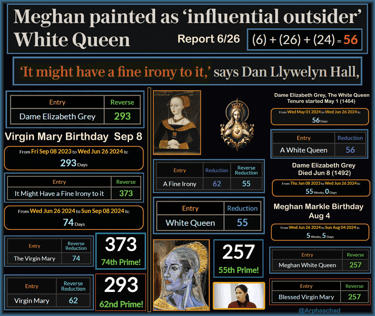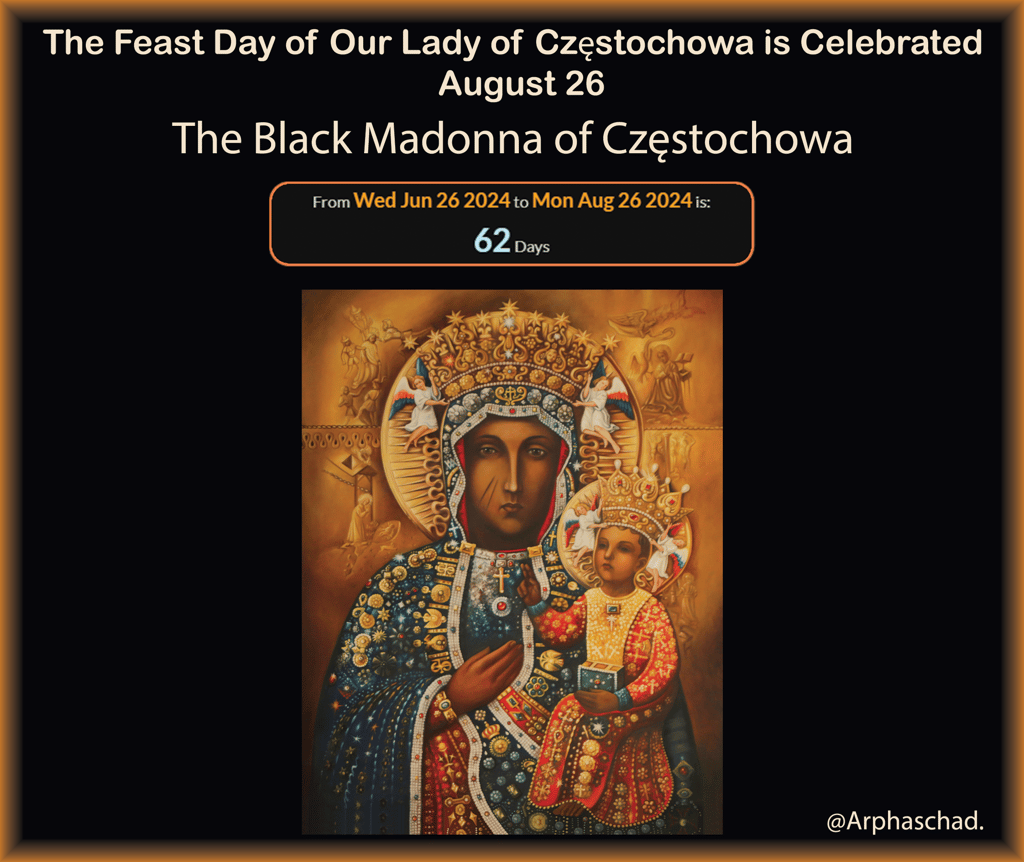Mary, the Mother of Jesus
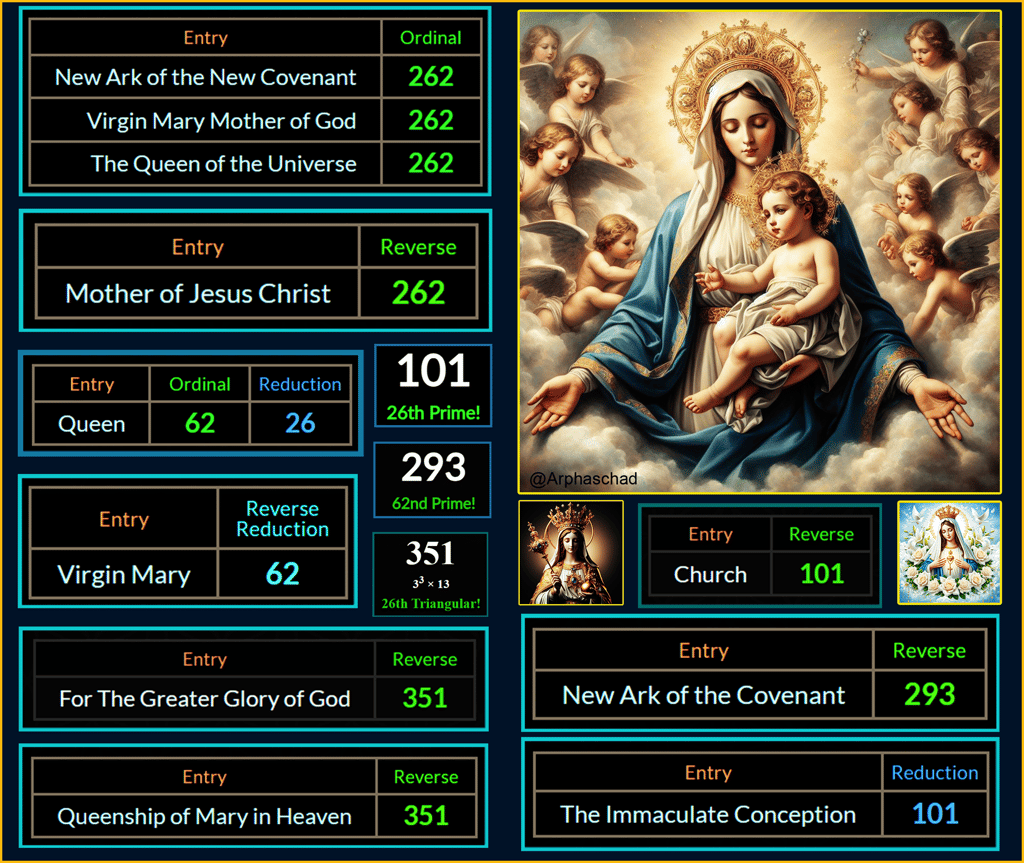











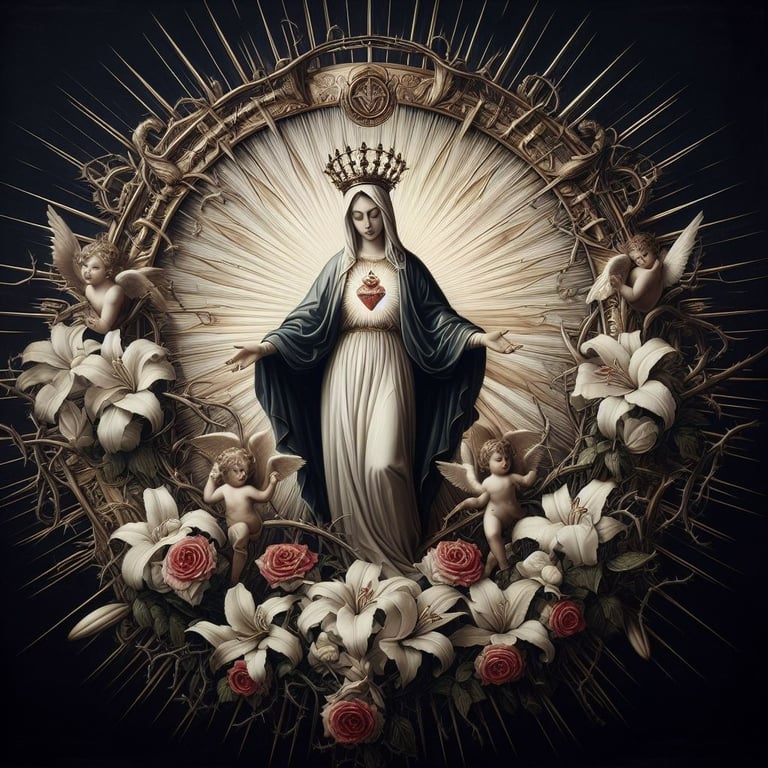



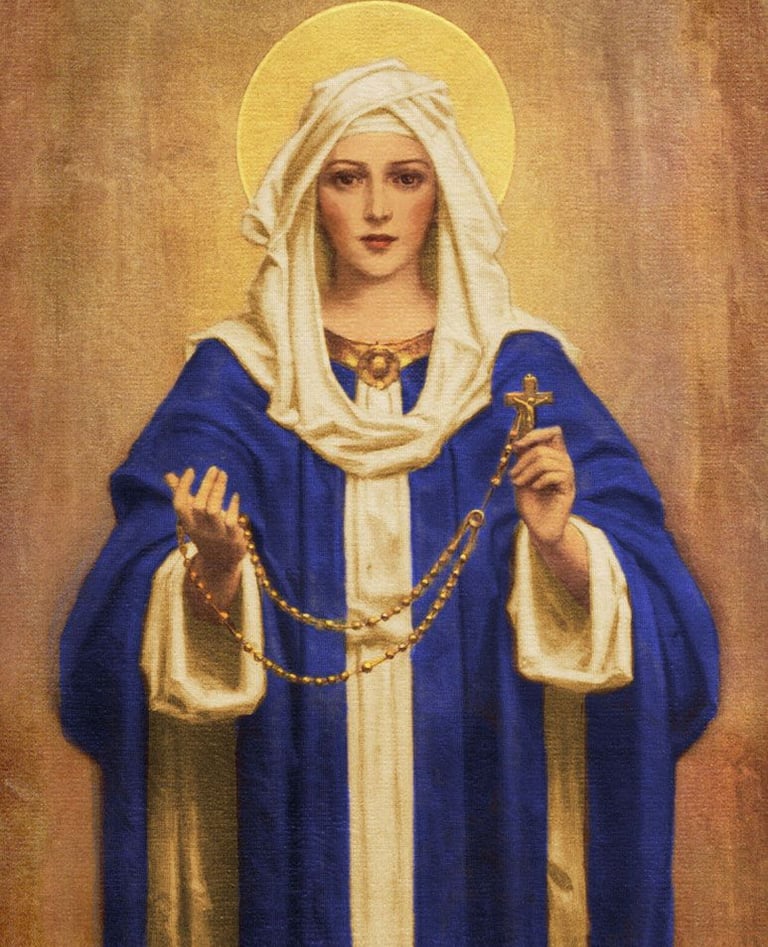








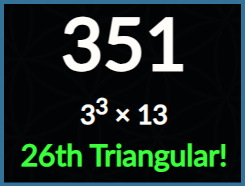




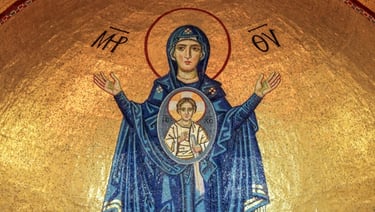
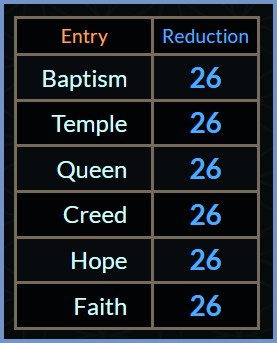









Luke 1:26–27 (D-R)
26 And in the sixth month, the angel Gabriel was sent from God into a city of Galilee, called Nazareth,
27 To a virgin espoused to a man whose name was Joseph, of the house of David: and the virgin’s name was Mary.






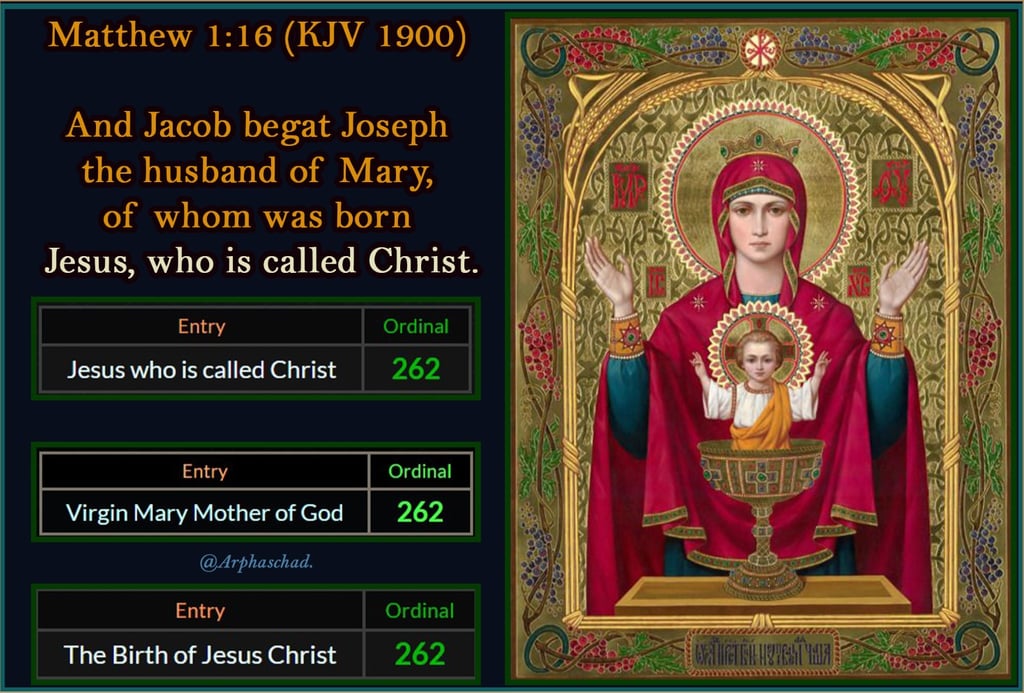


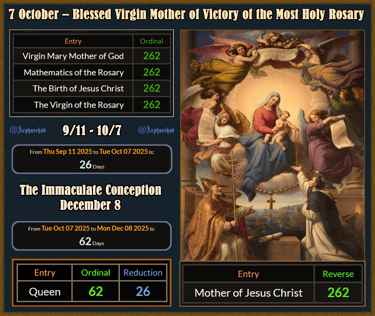
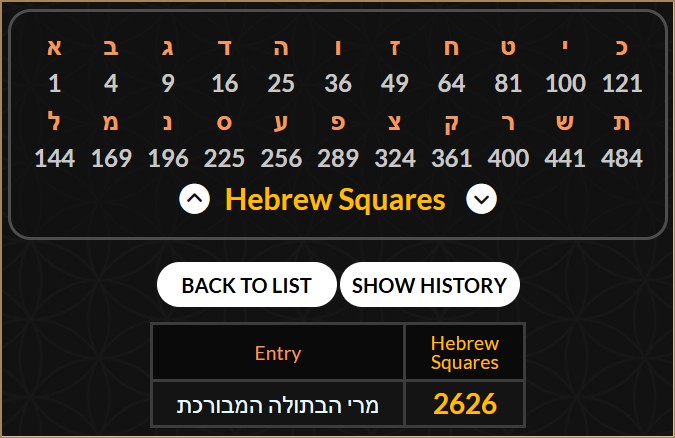

"Blessed Virgin Mary" in Hebrew
Leviticus 12:1–4 (D-R)
AND the Lord spoke to Moses, saying:
2 Speak to the children of Israel, and thou shalt say to them: If a woman having received seed shall bear a man child, she shall be unclean seven days, according to the days of separation of her flowers.
3 And on the eighth day the infant shall be circumcised:
4 But she shall remain three and thirty days in the blood of her purification. She shall touch no holy thing: neither shall she enter into the sanctuary, until the days of her purification, be fulfilled.


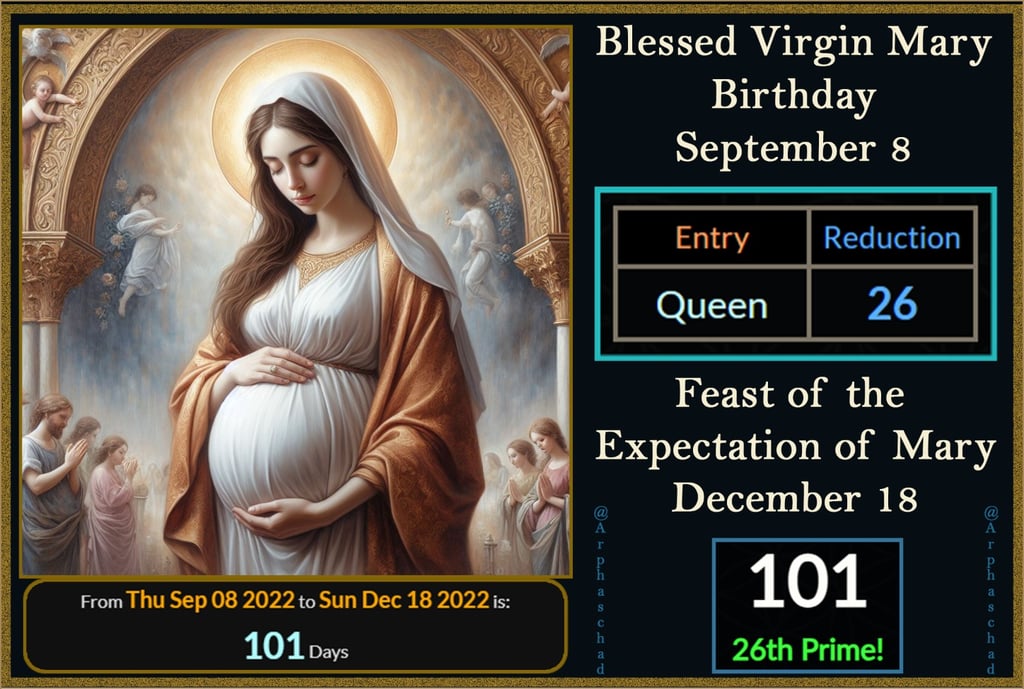

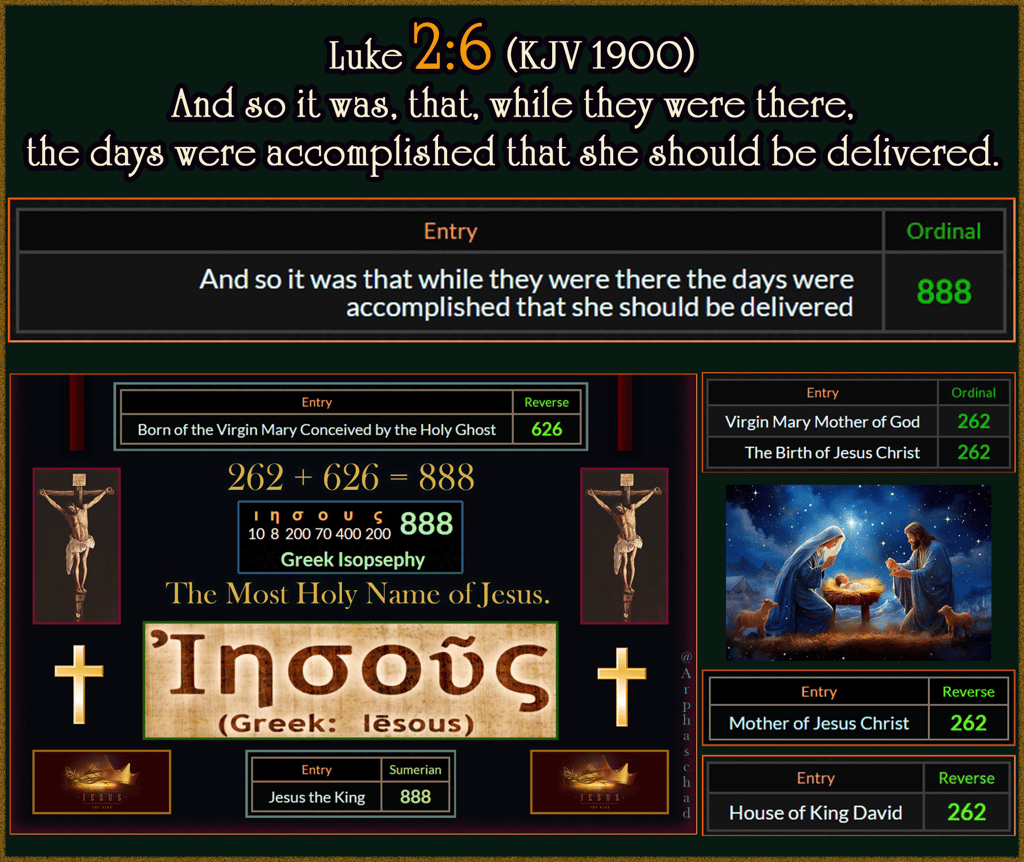

Luke 1:26 (KJV 1900) [TWENTY SIX]
And in the sixth month the angel Gabriel was sent from God unto a city of Galilee, named Nazareth.
Sirach 1:6–10 (D-R)
6 To whom hath the root of wisdom been revealed, and who hath known her wise counsels?
7 To whom hath the discipline of wisdom been revealed and made manifest? and who hath understood the multiplicity of her steps?
8 There is one most high Creator Almighty, and a powerful king, and greatly to be feared, who sitteth upon his throne, and is the God of dominion.
9 He created her in the Holy Ghost, and saw her, and numbered her, and measured her.
10 And he poured her out upon all his works, and upon all flesh according to his gift, and hath given her to them that love him.


Feast of St. John the Baptist, June 24
The Assumption of Mary, August 15
First Man summit of Mt. Everest, May 29, 1953
First Moon Landing, July 20, 1969
Luke 1:26 (D-R)
TWENTY SIX - And in the sixth month, the angel Gabriel was sent from God into a city of Galilee, called Nazareth,



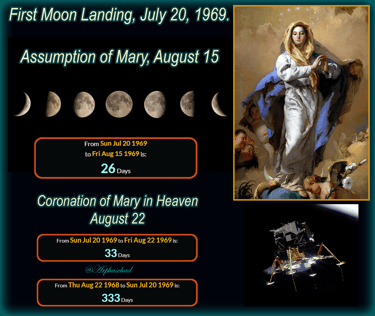
Buzz Aldrins Mother was called MAR I [Y] ON MOON.
Marion Moon.
Buzz Aldrin, born Edwin Eugene Aldrin Jr. on January 20, 1930, is an American astronaut, engineer, and decorated fighter pilot best known as the second human to walk on the Moon during the historic Apollo 11 mission in 1969, following Neil Armstrong


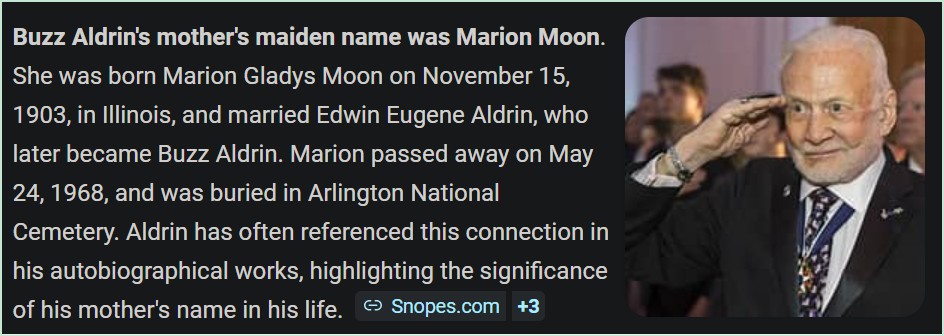





President Nixon was Inaugurated January 20, 1968.
101st Prime = 547
26th Prime = 101


Vigil of the Nativity of Mary
September 7


QEII funeral Sep 19, 2022
- Notre Dame Cathedral New Altar Consecrated, December 8, 2024 on the Immaculate Conception
"Queen" = 26/62 [reduction/ordinal] funeral on Sep 19 - day 262.

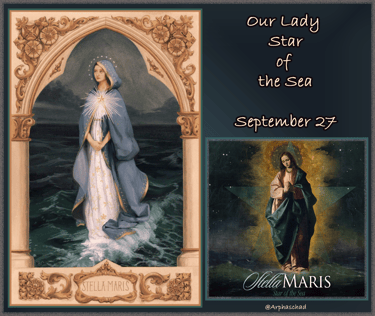


Russell MARION Nelson was President for exactly 402 weeks 0 days.
September 27 , 2025 is exactly 42 weeks 0 days to The Immaculate Conception.
42 Generations to Christ .
The Society of Jesus was given Papal Approval on the Feast of Our Lady Star of the Sea.
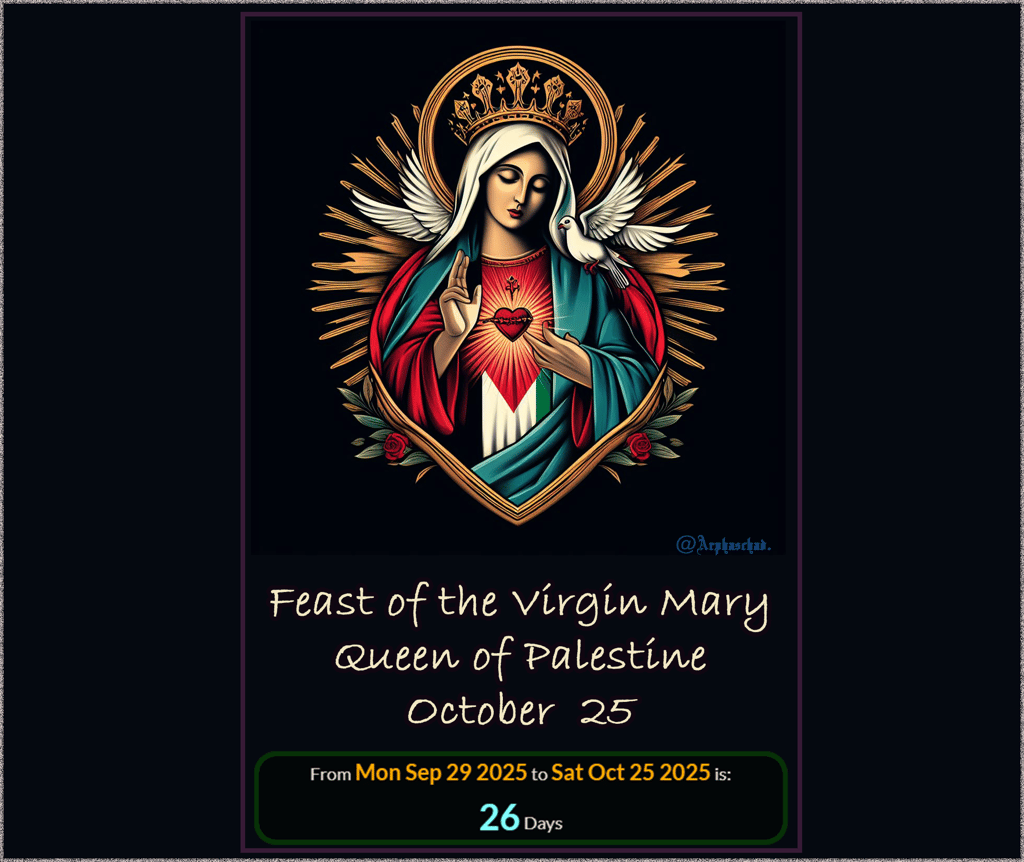

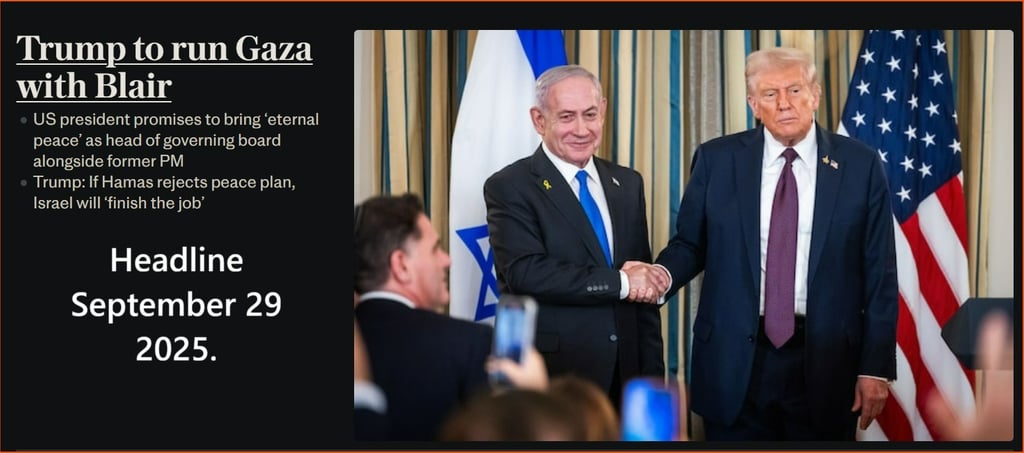

September 29, 2025 is
101 days from Prince William's Birthday.
The 26th Prime Number = 101

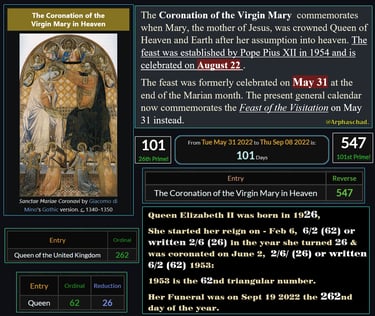
Queen Elizabeth II died September 8th 2022
Queen Elizabeth II Mother died at age 101.
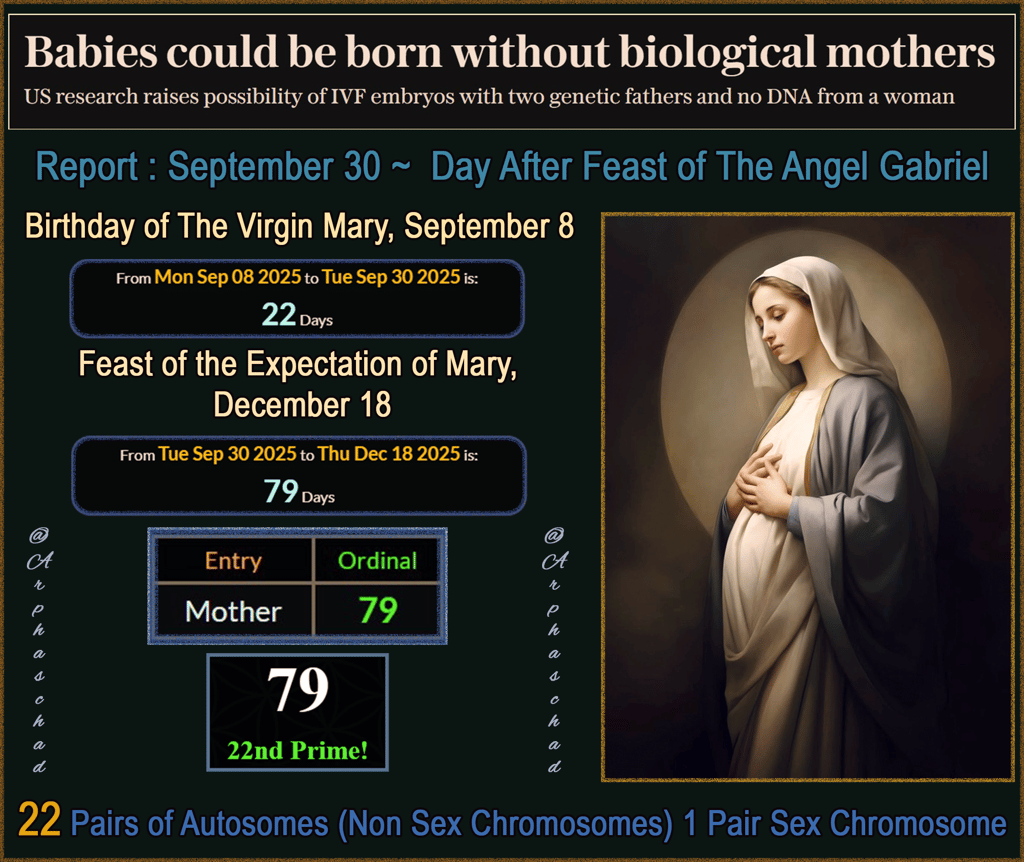



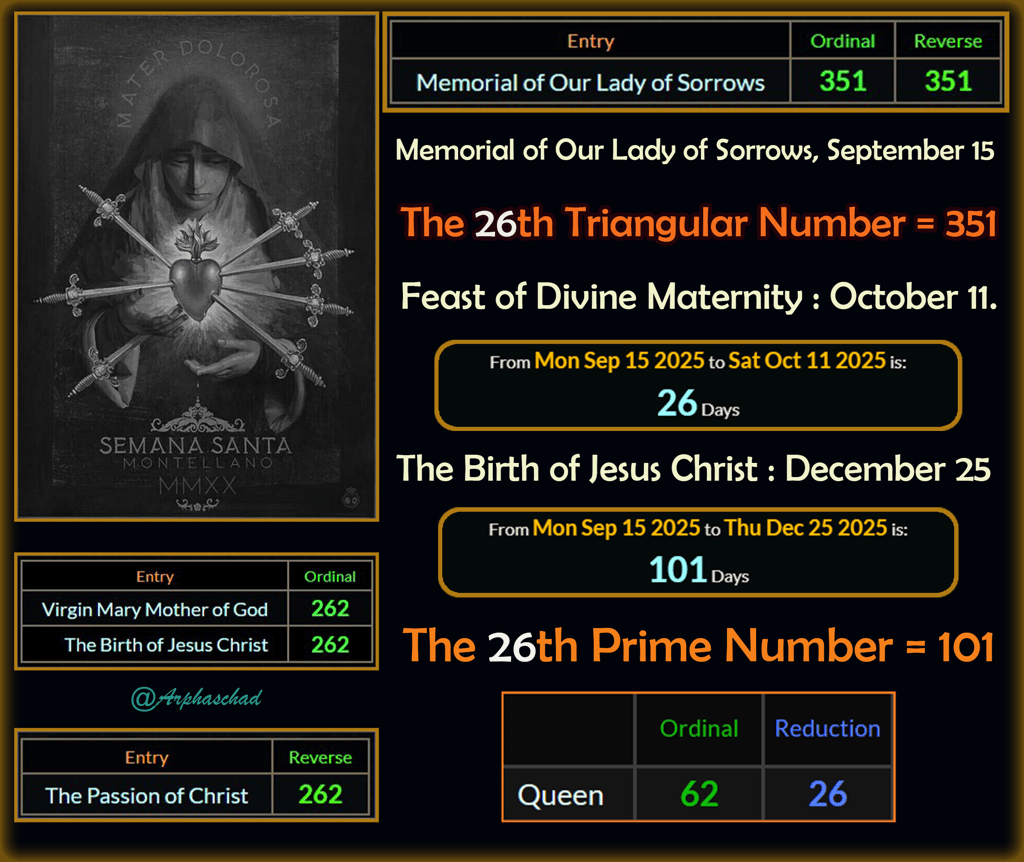

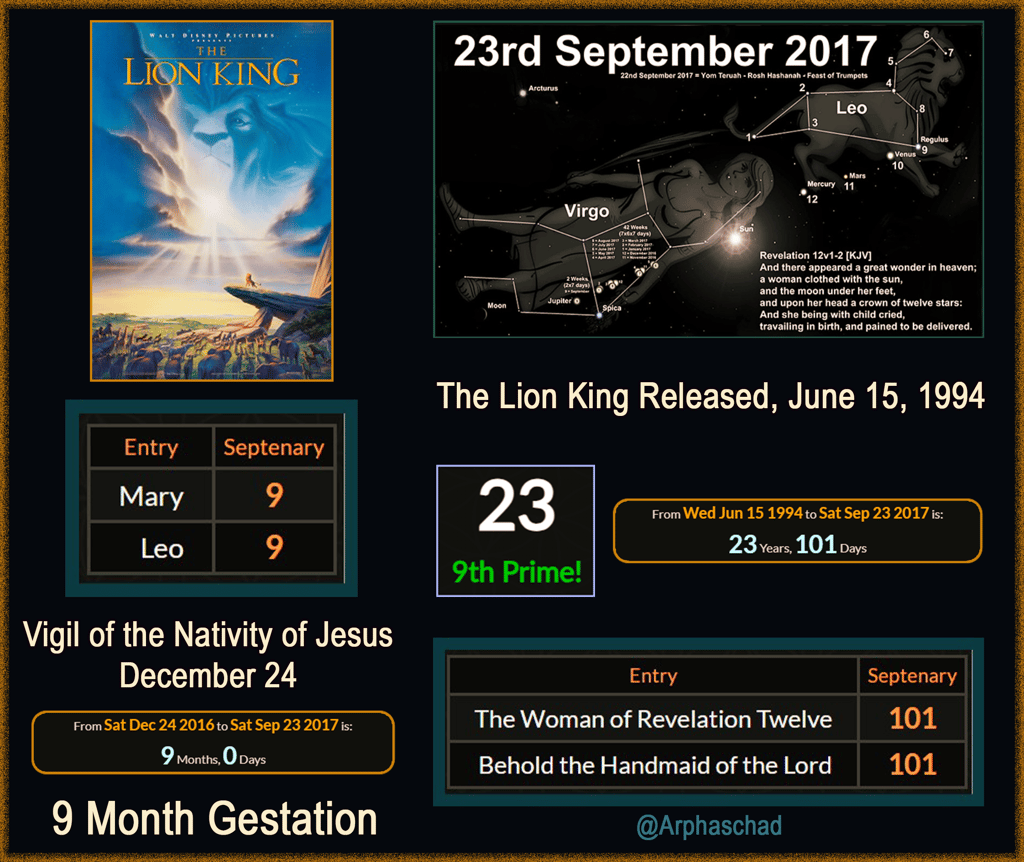

Revelation 12:1 (D-R)
AND a great sign appeared in heaven: A woman clothed with the sun, and the moon under her feet, and on her head a crown of twelve stars.
New Pope : Pope Leo XIV [Leo = Lion in Latin]
Note the 12 stars of Leo above CROWNING Virgo, September 23, 2017.
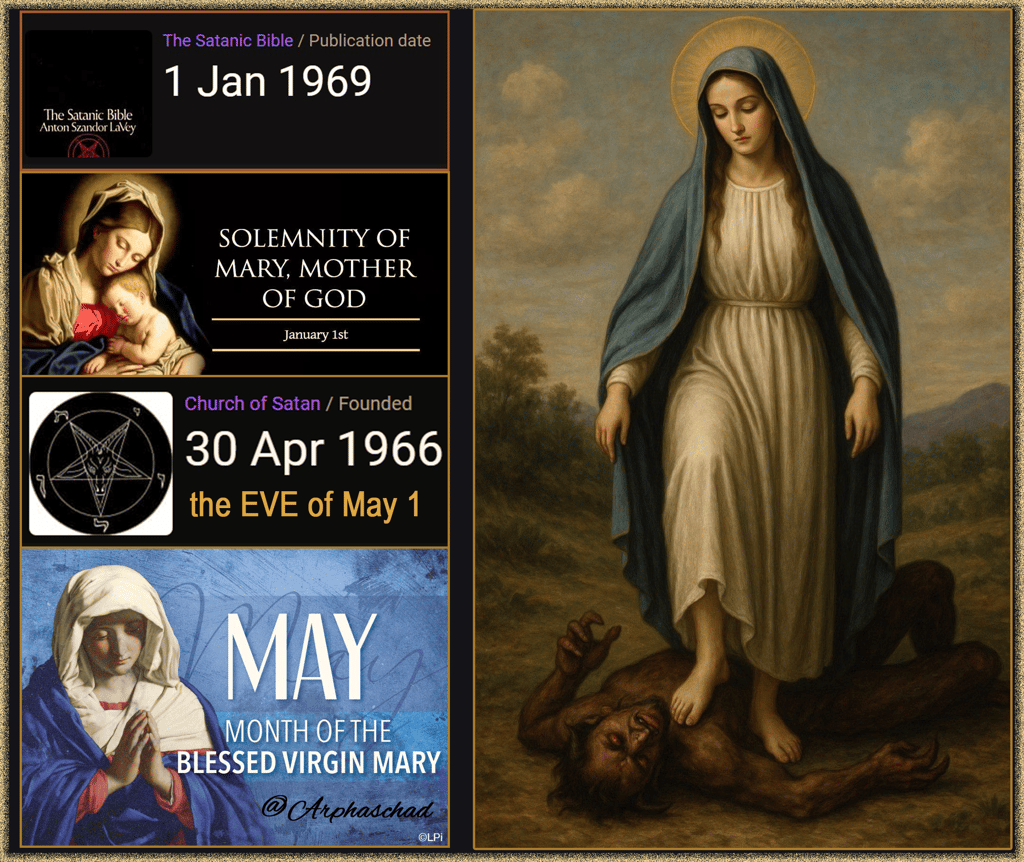

Genesis 3:15 (D-R)
15 I will put enmities between thee and the woman, and thy seed and her seed: she shall crush thy head, and thou shalt lie in wait for her heel.
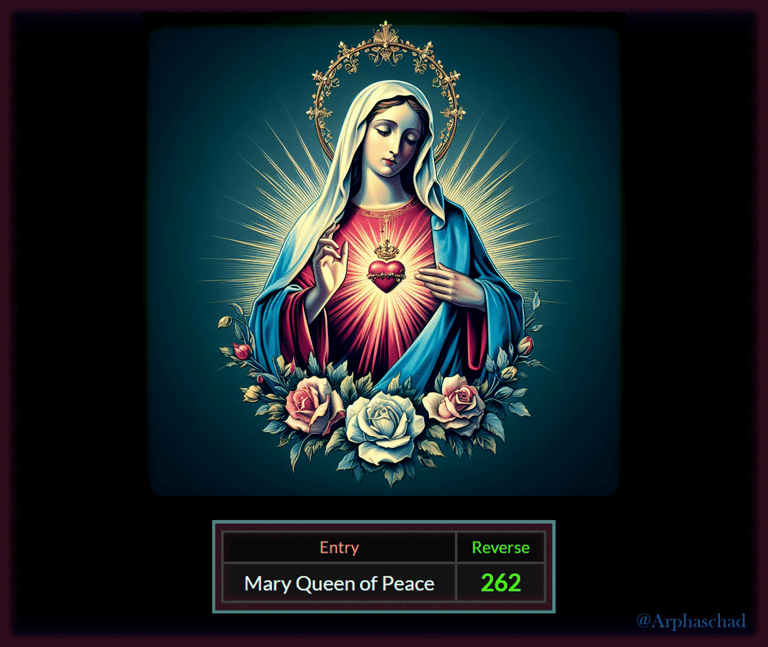







President Nixon Inauguration on 20/1
Apollo 11 landed on day 201, July 20, 1969
First Man on Moon July 21, 1969 (Neil Armstrong)
20 Weeks 1 Day prior to the Immaculate Conception.
26 th Prime = 101
"The Immaculate Conception" = 101 [reduction]
"Queen" = 26 [reduction]
Neil Armstrong died on 25 August 2012
Luke 1:26–27 (KJV 1900)
26 And in the sixth month the angel Gabriel was sent from God unto a city of Galilee, named Nazareth,
27 To a virgin espoused to a man whose name was Joseph, of the house of David;
and the virgin’s name was Mary.




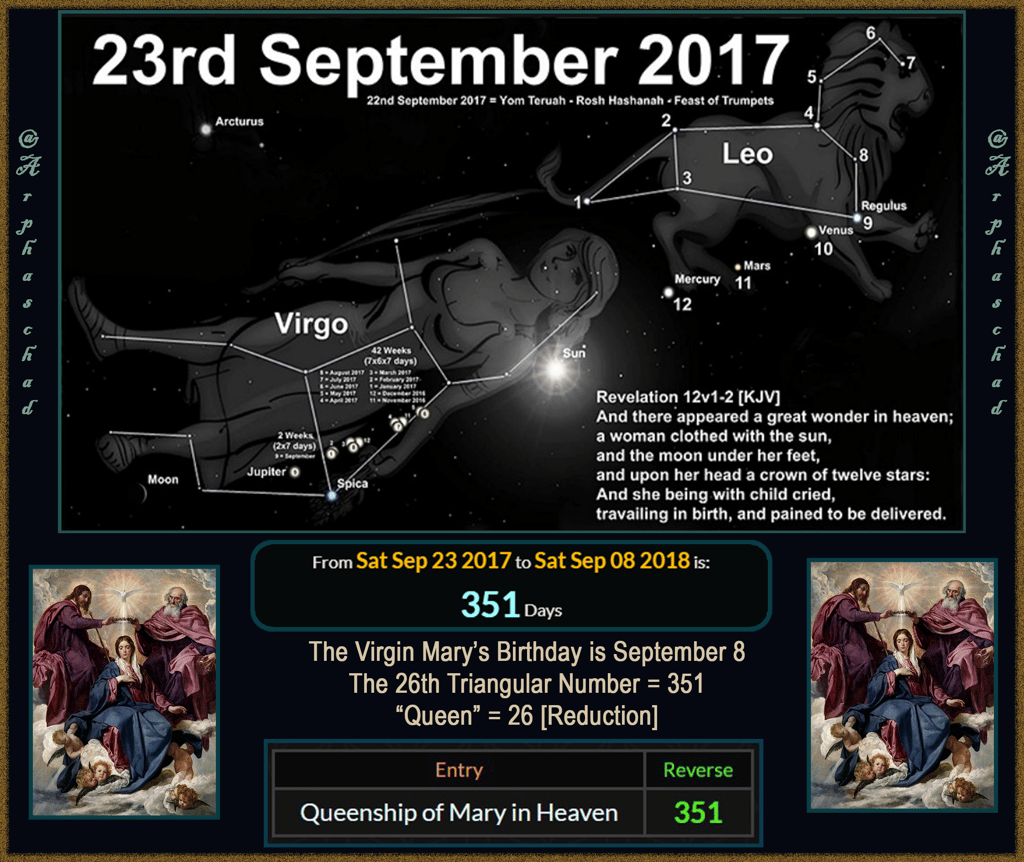


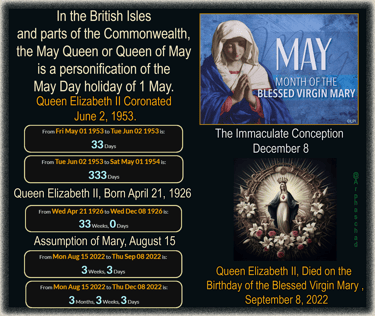


The Traditional date for the Queenship of Mary in Heaven is May 31.
It was changed to August 22.
May 31, 1801
The Scottish Rite of Freemasonry of the 33rd Degree decided to form their
Supreme Mother Council of the World
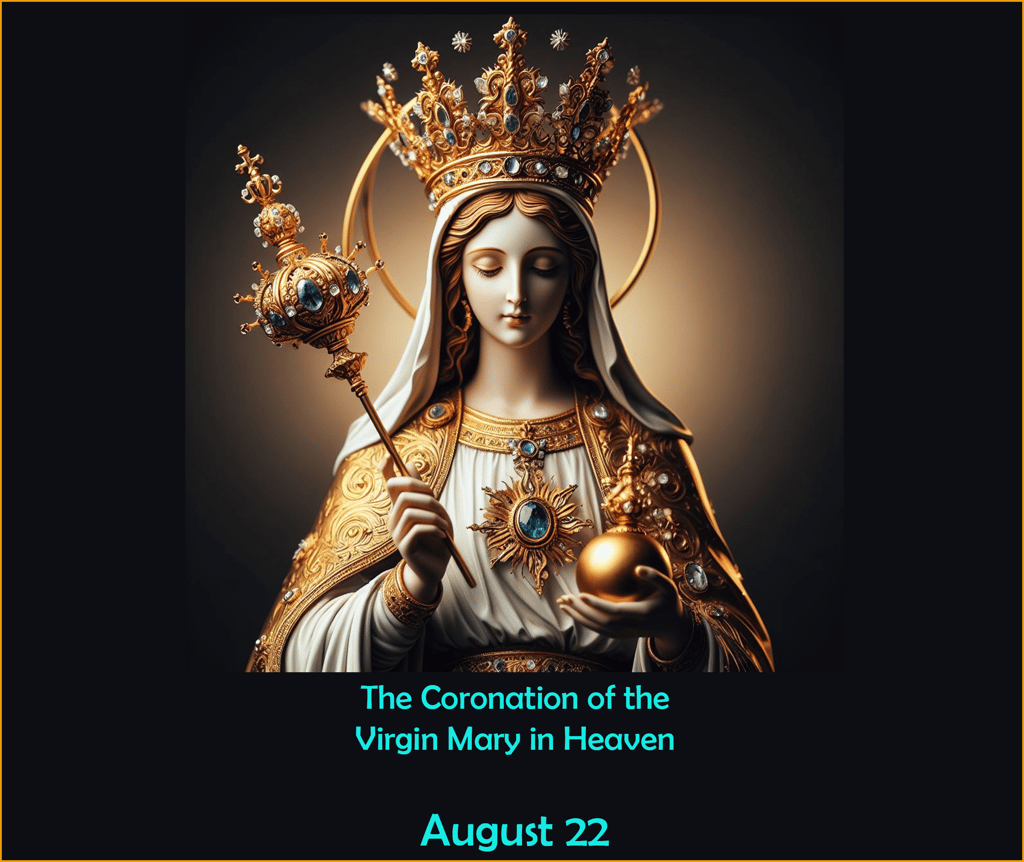





The Blessed Virgin Mary's birthday is September 8.
New Year is January 1.
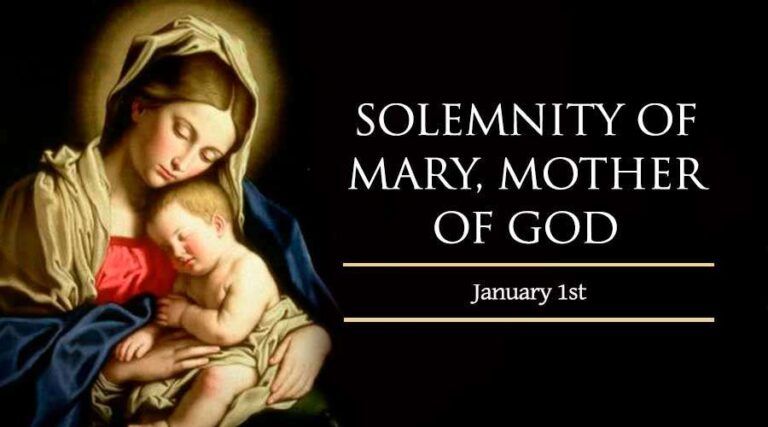



October 11 is the
Feast of the Divine Maternity of the Blessed Virgin Mary.



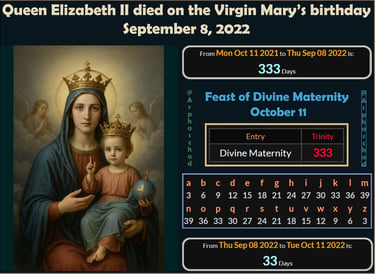
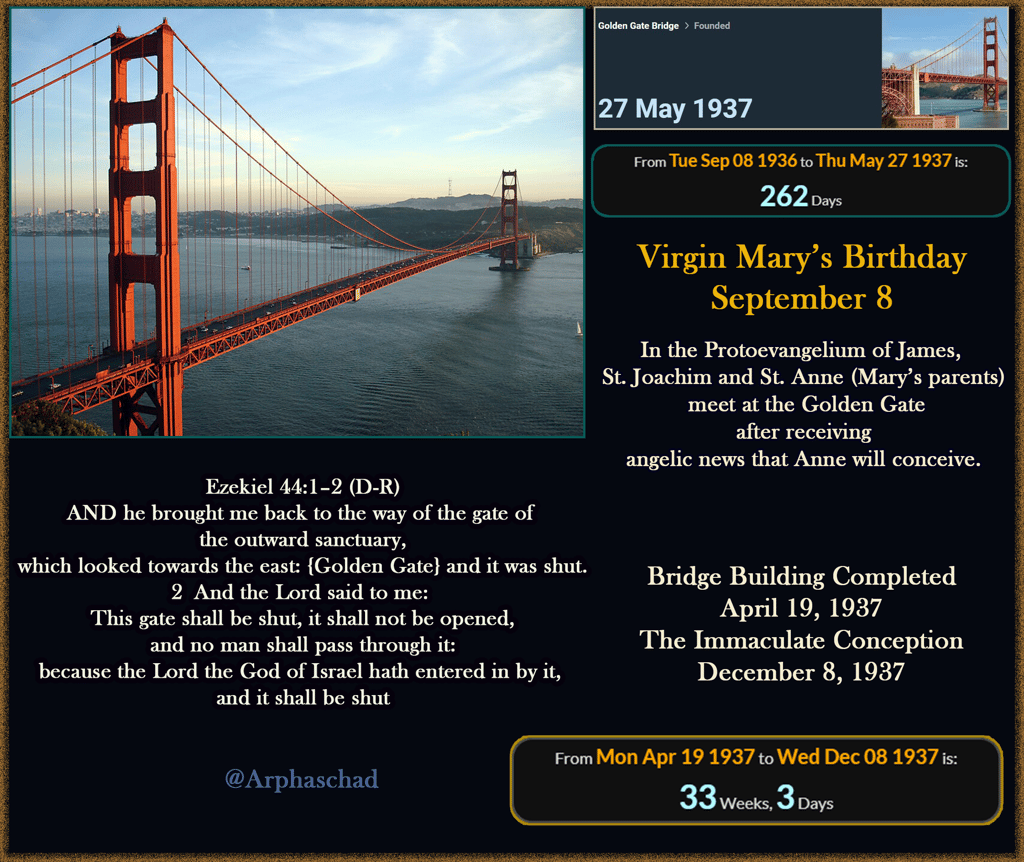



August 22 ,
The Coronation of Mary in Heaven.
It is 33 weeks 3 days into the year.
The Golden Gate Bridge is a "tribute" to the Eastern Gate of Jersusalem
and ultimately the Virgin Mary.
26 + 62 = 88
(5) + (27) + (19) + (37) = 88
There is an 88 day span between the Opening of the Golden Gate Bridge and August 22.
April 19 is often cited in occult literature as the beginning of a 13-day period known as the “Blood Sacrifice to the Beast”, which culminates on May 1 (Beltane)—a traditional pagan fire festival. This window is said to be associated with fire rituals, and some theorists link it to historical tragedies involving fire or explosions, such as:
The Waco Siege (April 19, 1993)
The Oklahoma City Bombing (April 19, 1995)
The Columbine High School massacre (April 20, 1999)
In certain esoteric frameworks, April 19 {Date of Completion} is symbolically tied to Baal or Molech, ancient deities associated with fire and sacrifice. Some interpretations suggest that this date marks a time of heightened spiritual tension or ritual significance, especially in traditions that invert biblical symbolism.


13 days after May 1 is Israel's birthday 5/14/1948.
The high human sacrifice day splits the God number 26 days in half .
After 5/14 there are 33 weeks to the end of the year.
19 April, start of days of beast
20 April, birthday of Hitler
21 April, birthday of Rome
21 April, birthday of Queen Elizabeth II.
Israel Re - established
May 14, 1948.


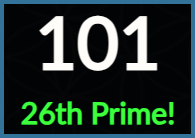





Vigil of the Nativity of Mary : September 7
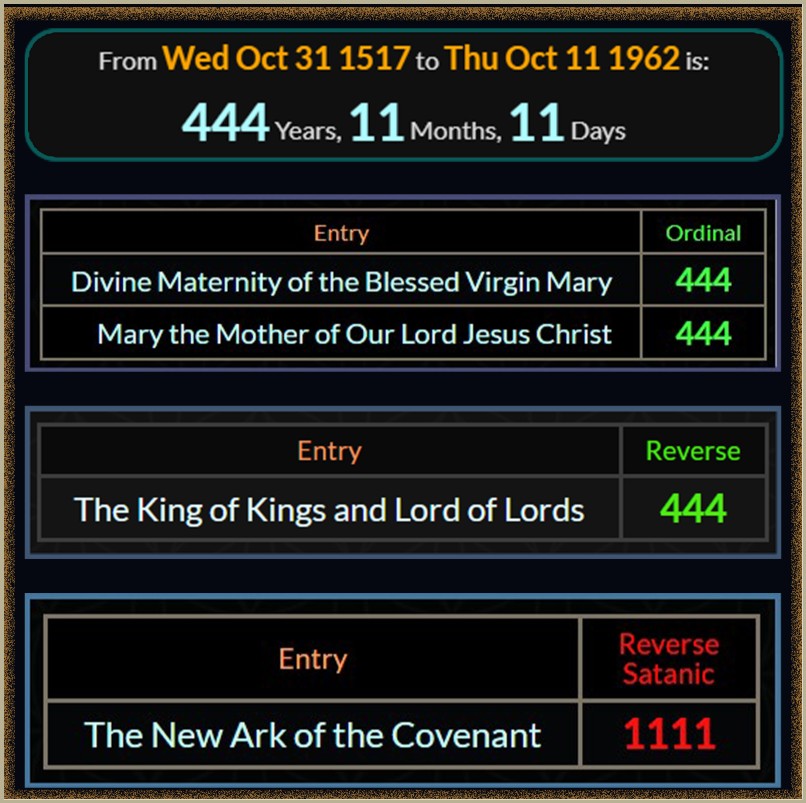

October 31, 1517 is the start of the Protestant Reformation.
The Second Vatican Council (Vatican II) opened on: October 11, 1962.
October 11 is the Feast of Divine Maternity.




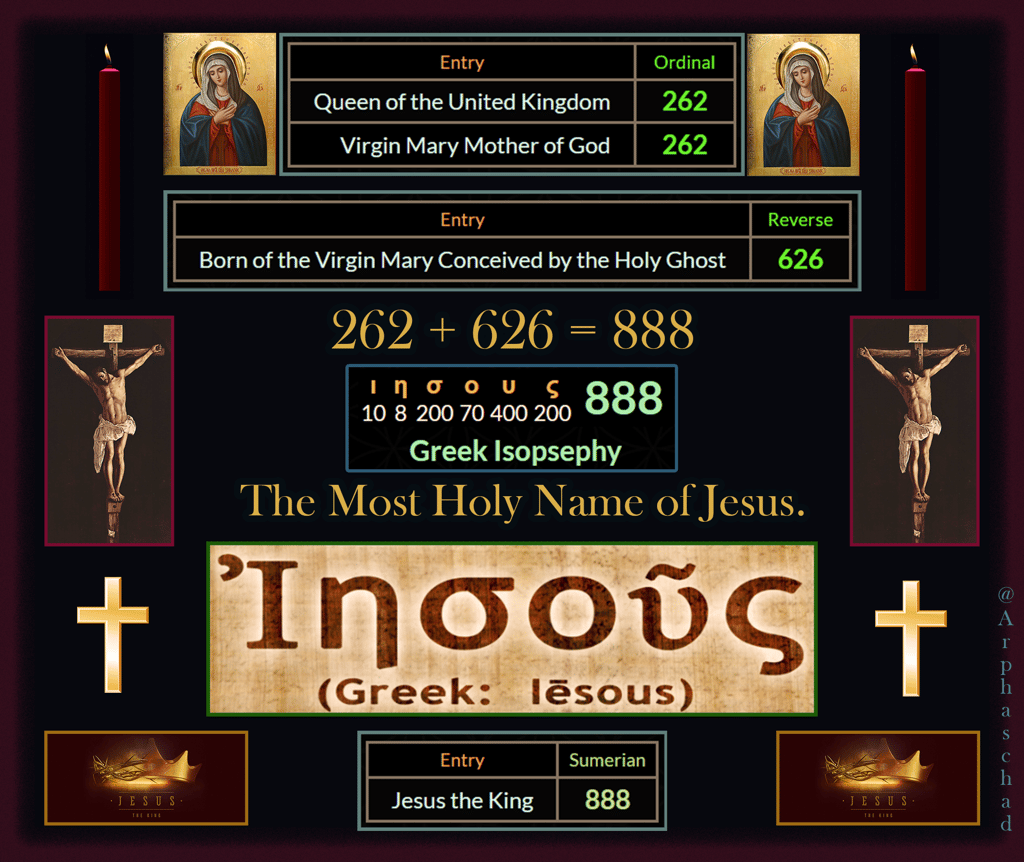

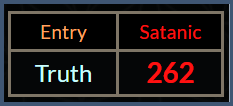

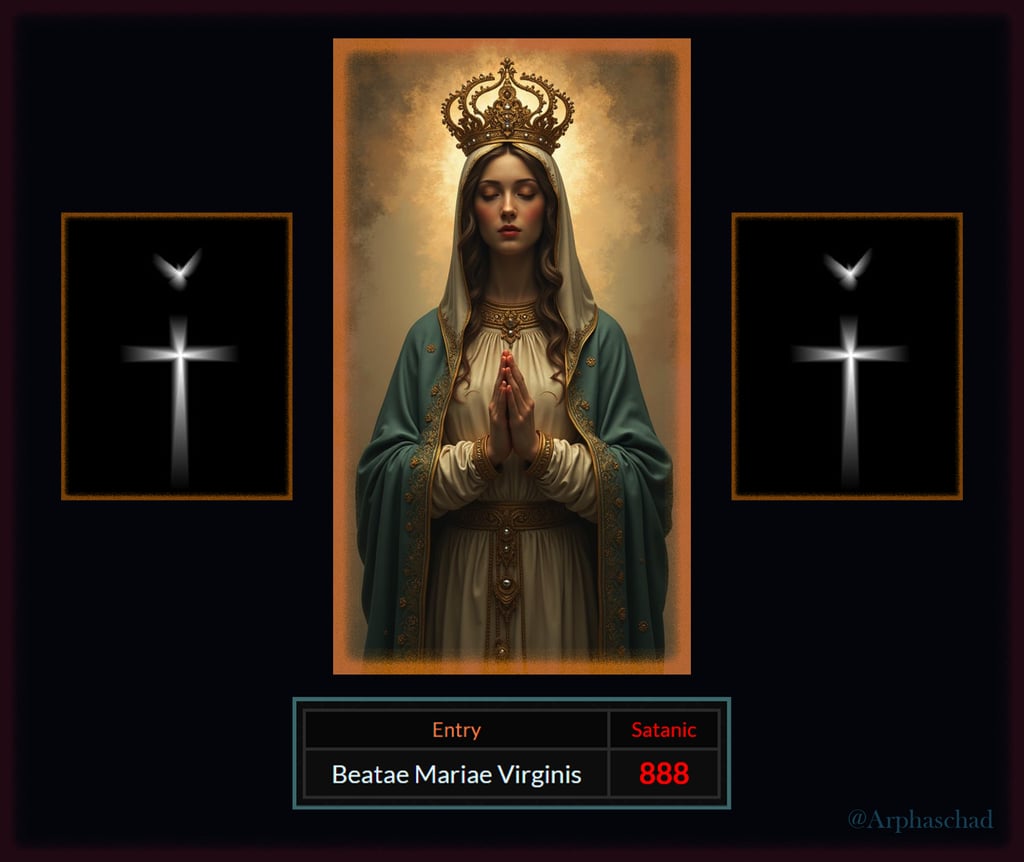







Revelation 12:1 (D-R)
AND a great sign appeared in heaven: A woman clothed with the sun, and the moon under her feet, and on her head a crown of twelve stars.
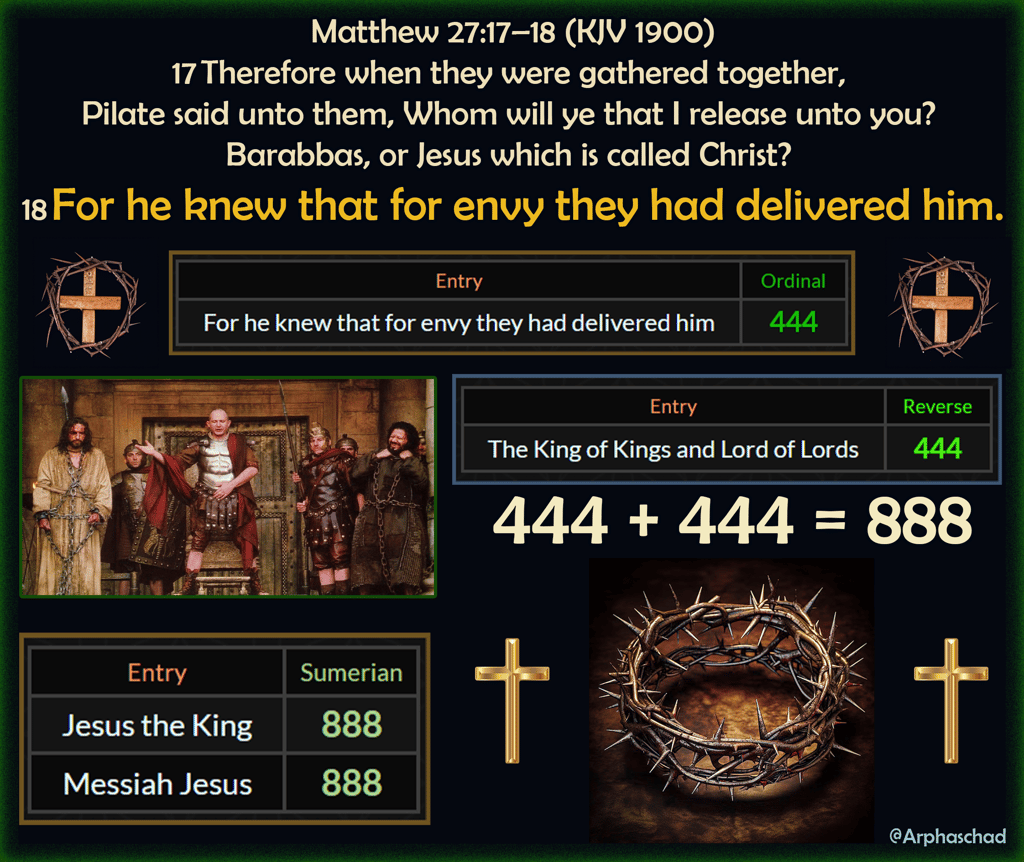

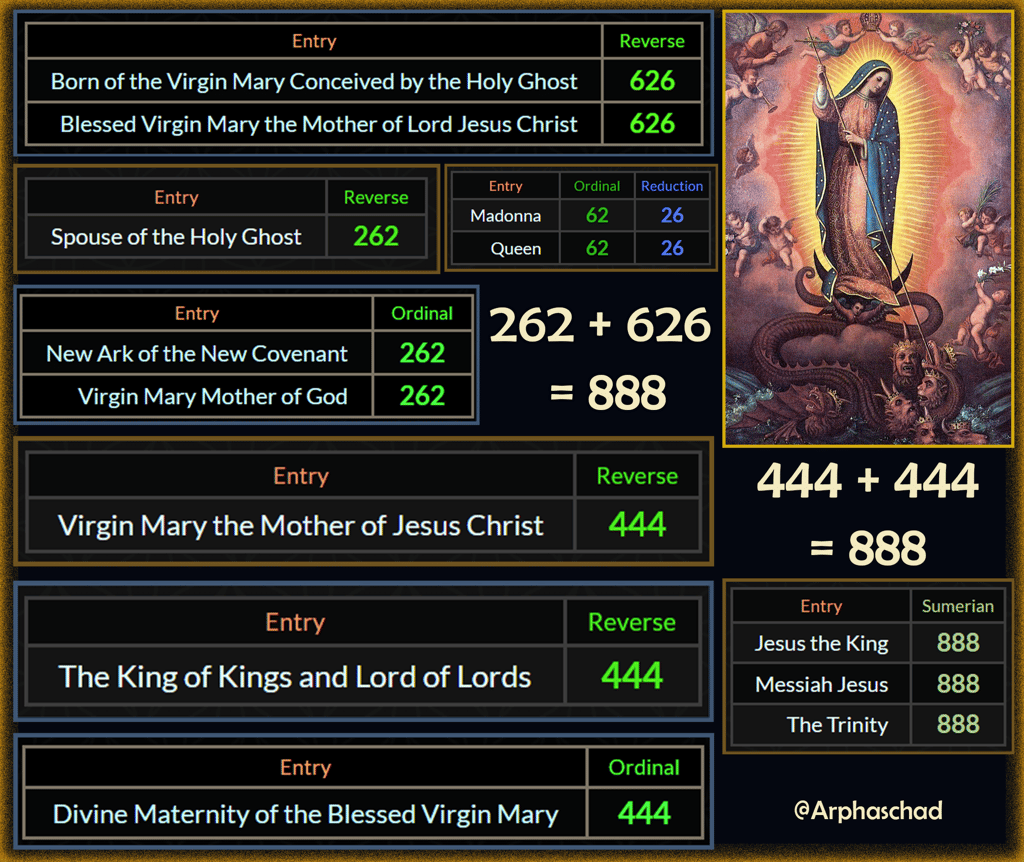









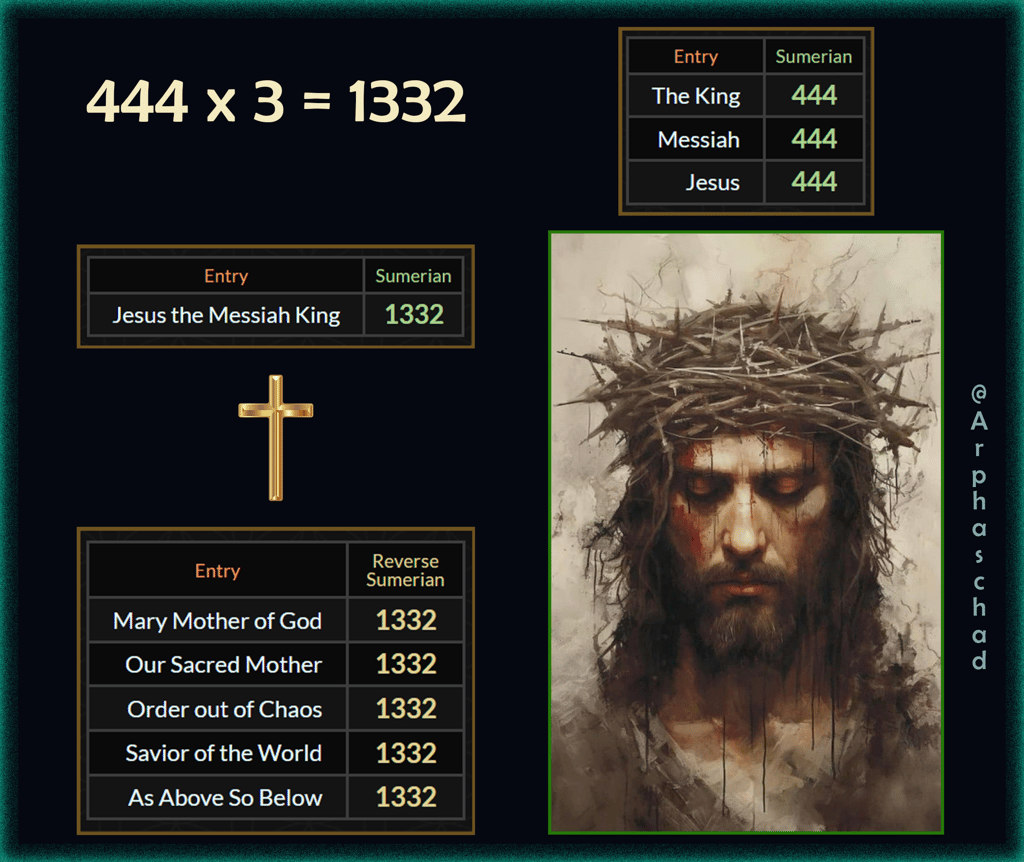

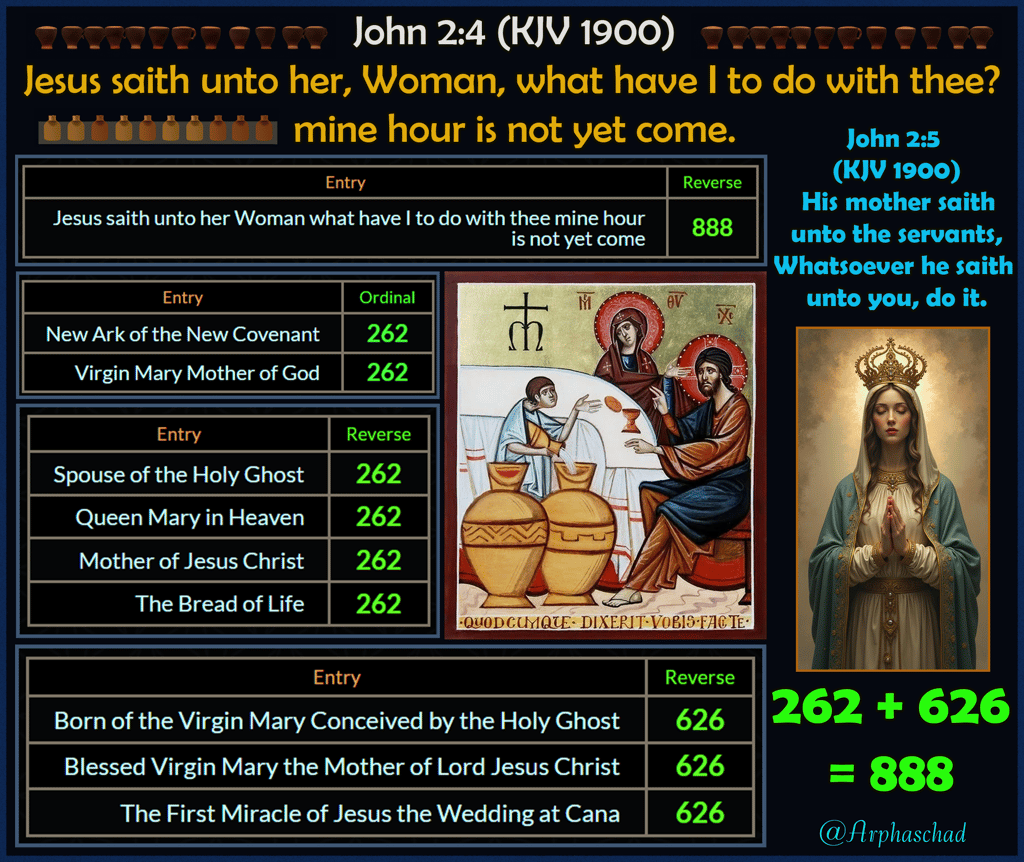

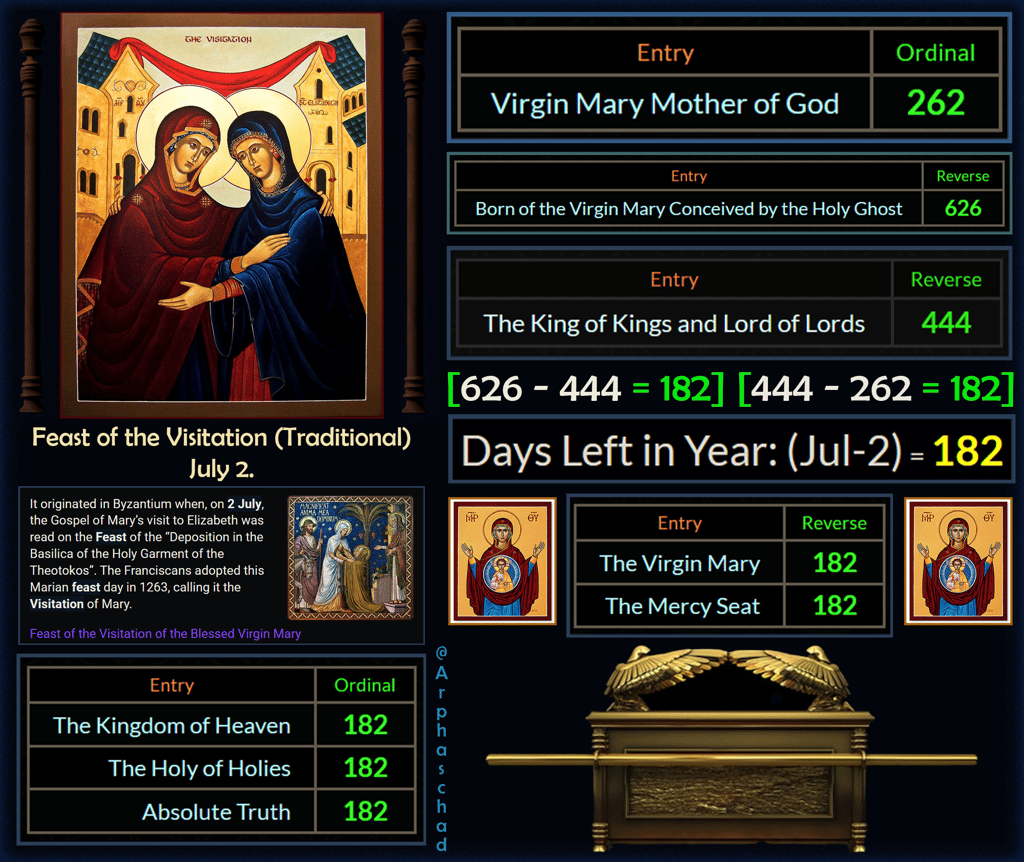



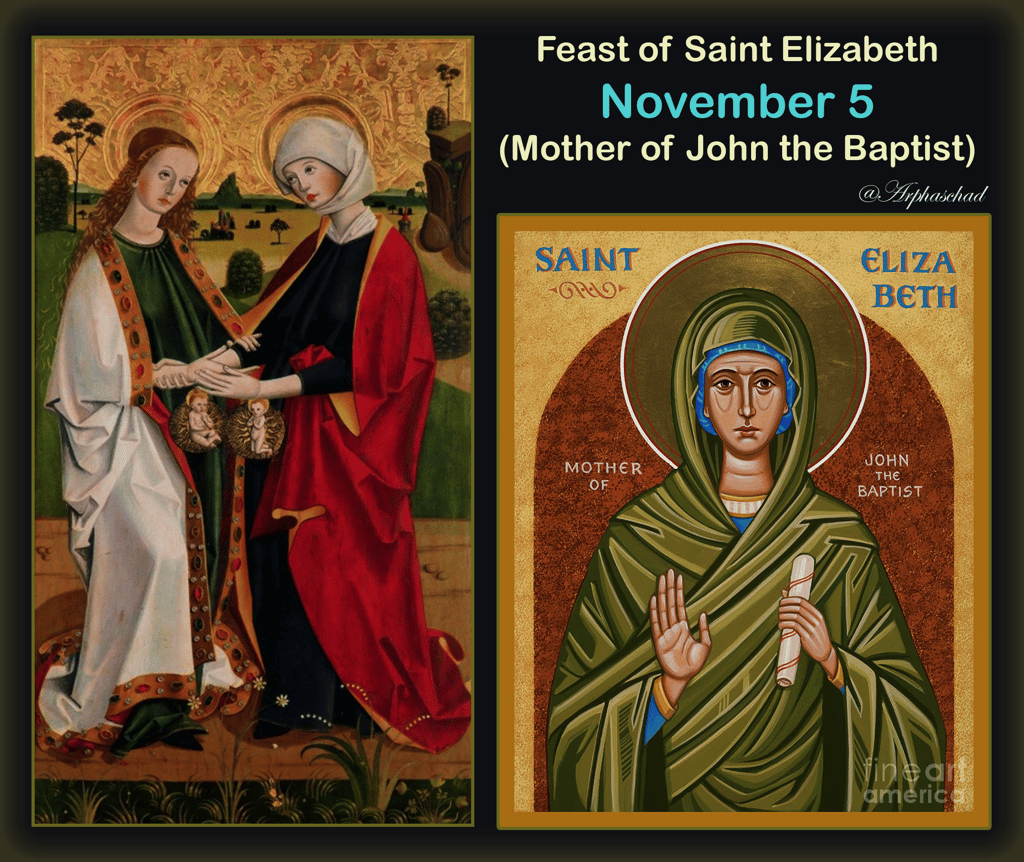


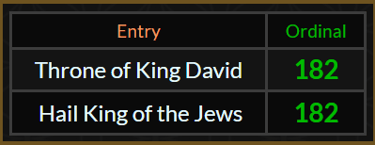
182 Days is 26 Weeks
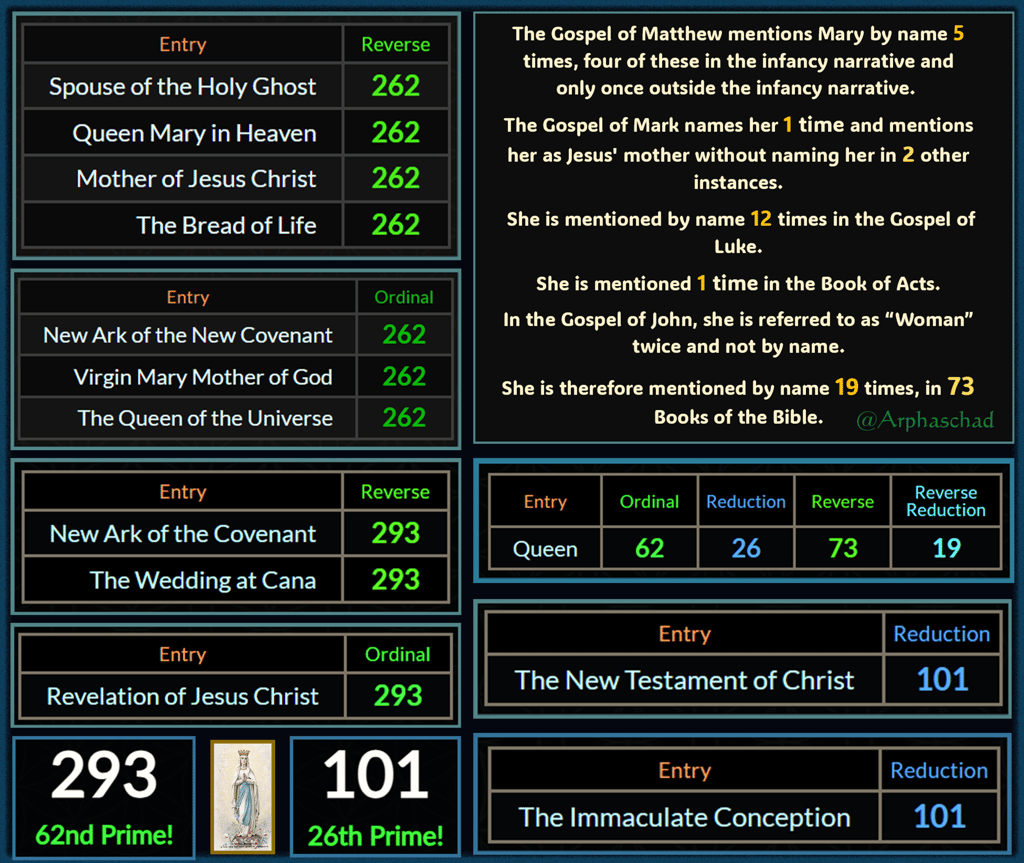

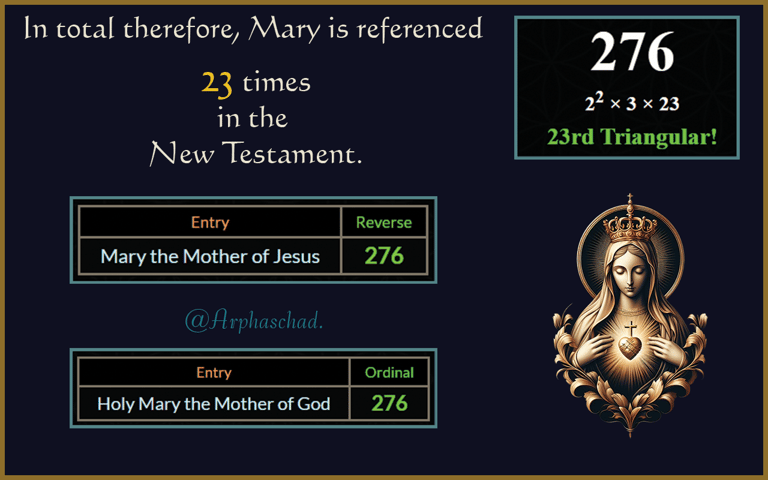









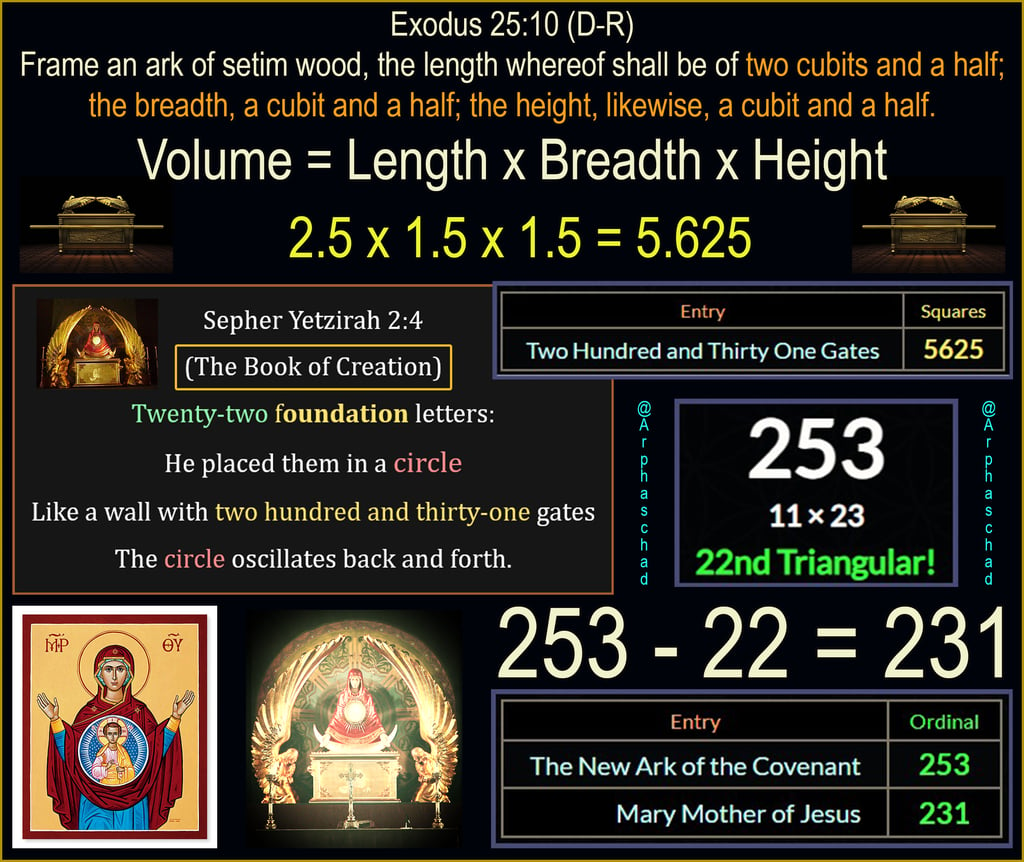

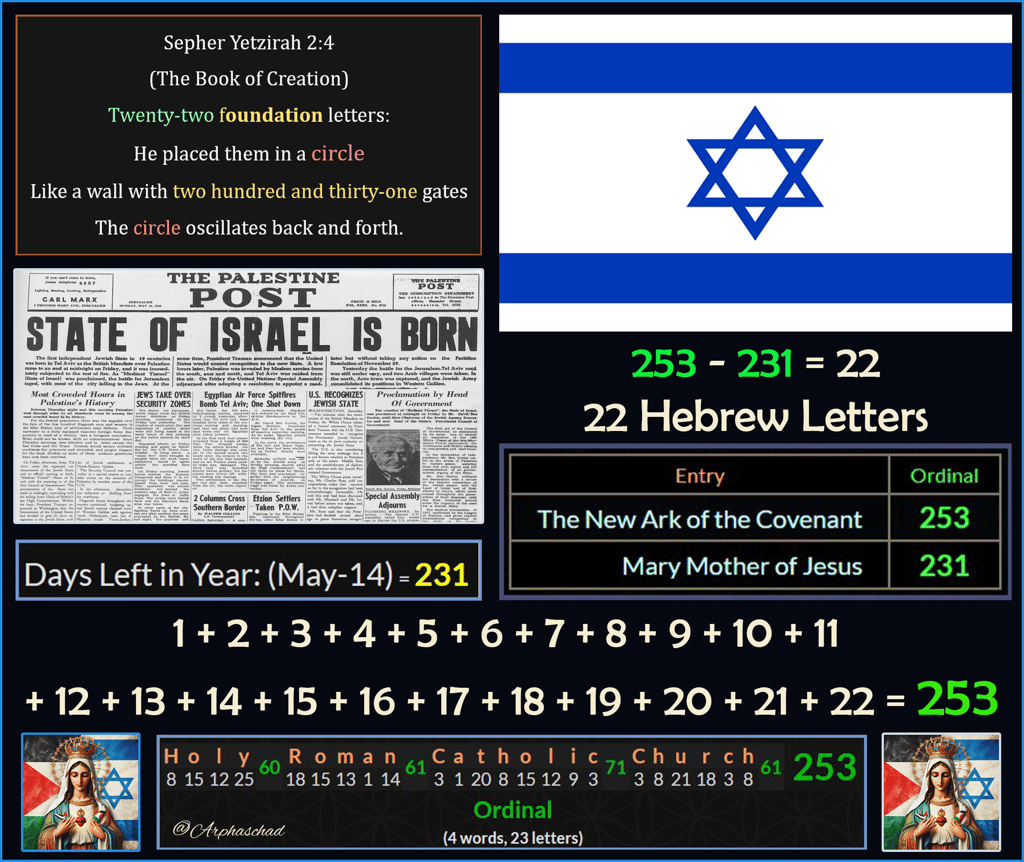

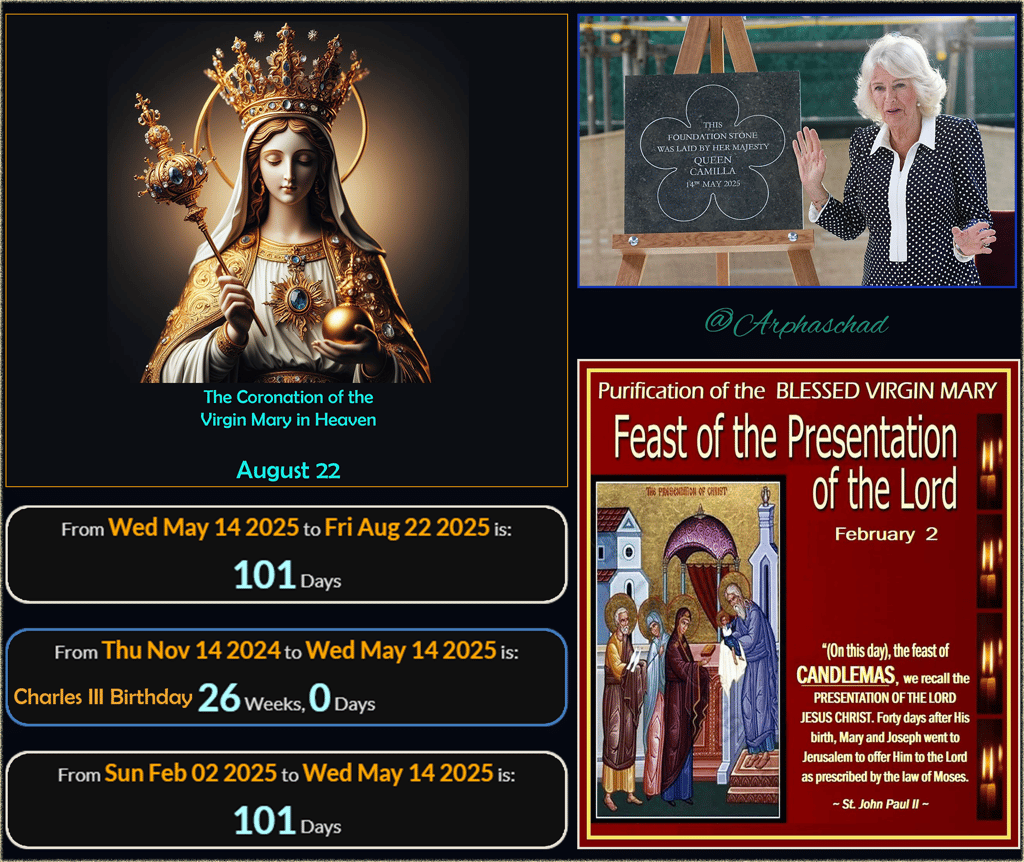

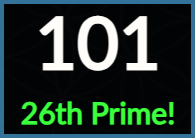

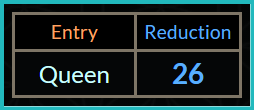


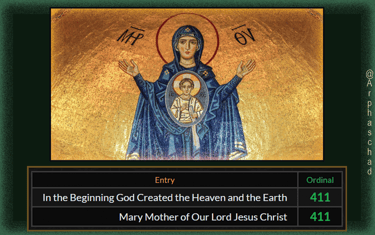
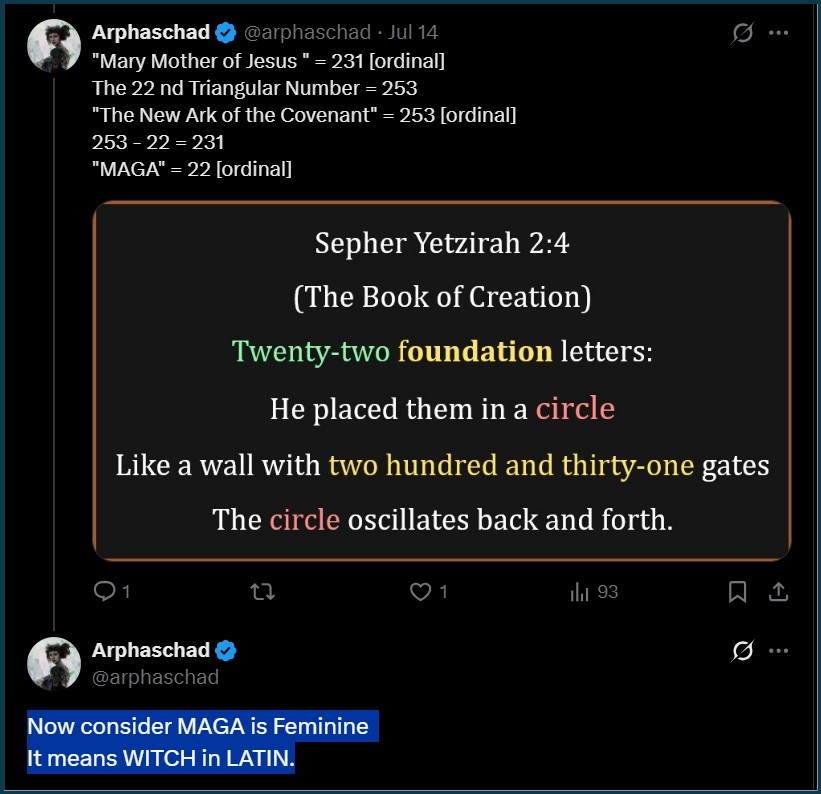

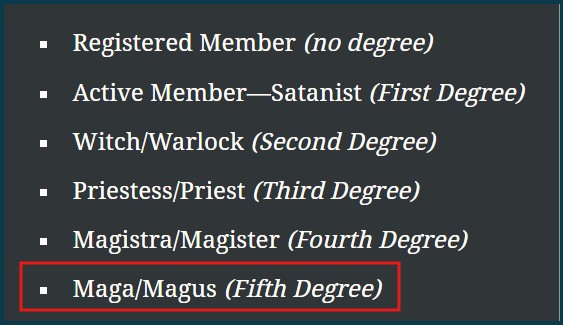

Hierarchy of the Church of Satan.
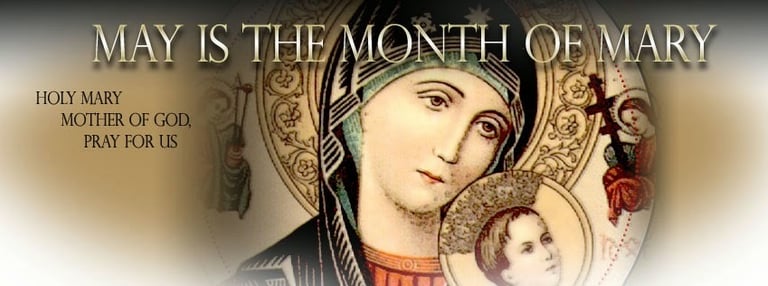

May is the FIFTH Month
May 1, is the Day After the Foundation Date of the Church of Satan, founded on April 30, '66
The EVE of the first day of May.
May 1 is also BELTANE.
May 1, known as May Day, is a significant worship day to Satanists, Wiccan, pagans, Masons, and occultists as the Beltane festival. It is a time of honoring the fertility gods, sexual gods, witchcraft gods, and sacrifices to the gods.
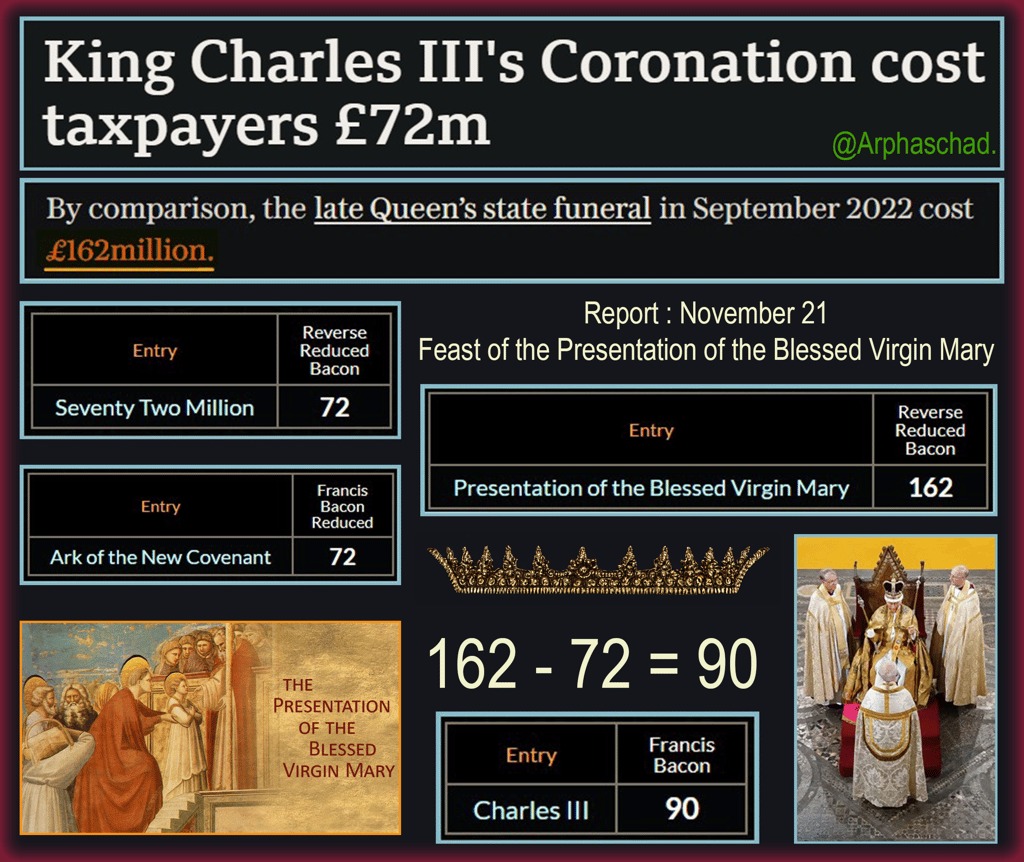














May 1, 1776 is the Founding Date of the Illuminati.
Founded by Adam Weishaupt.
A title for Mary the Mother of Jesus is the Illuminatrix.
Queen Elizabeth II's Funeral was September 19, 2022.
888 + 888 = 1776
262 + 626 = 888

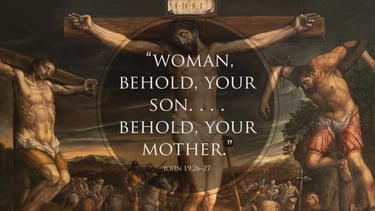
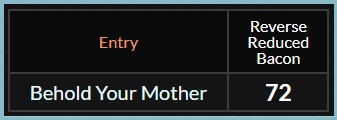



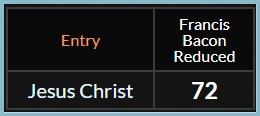


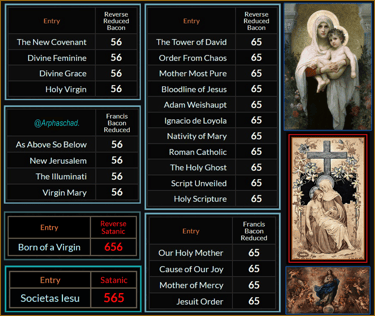
John 19:26–27 (D-R)
26 When Jesus therefore had seen his mother and the disciple standing whom he loved, he saith to his mother: Woman, behold thy son.
27 After that, he saith to the disciple: Behold thy mother. And from that hour, the disciple took her to his own.
19 + 26 + 27 = 72.




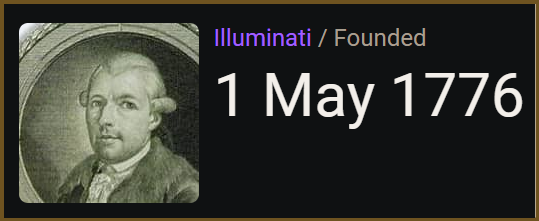

... and as if to cover the Month of Mary,
A Title for Mary is
The Illuminatrix.





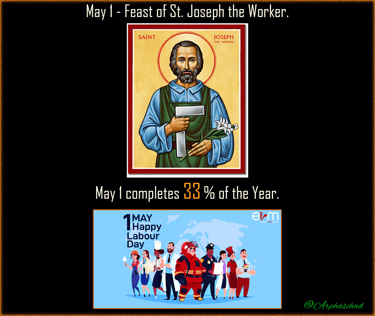
121 ÷ 365 [days in year] ≈ 0.33150684931
0.33150684931 × 100 ≈ 33.15%
on 1/5.

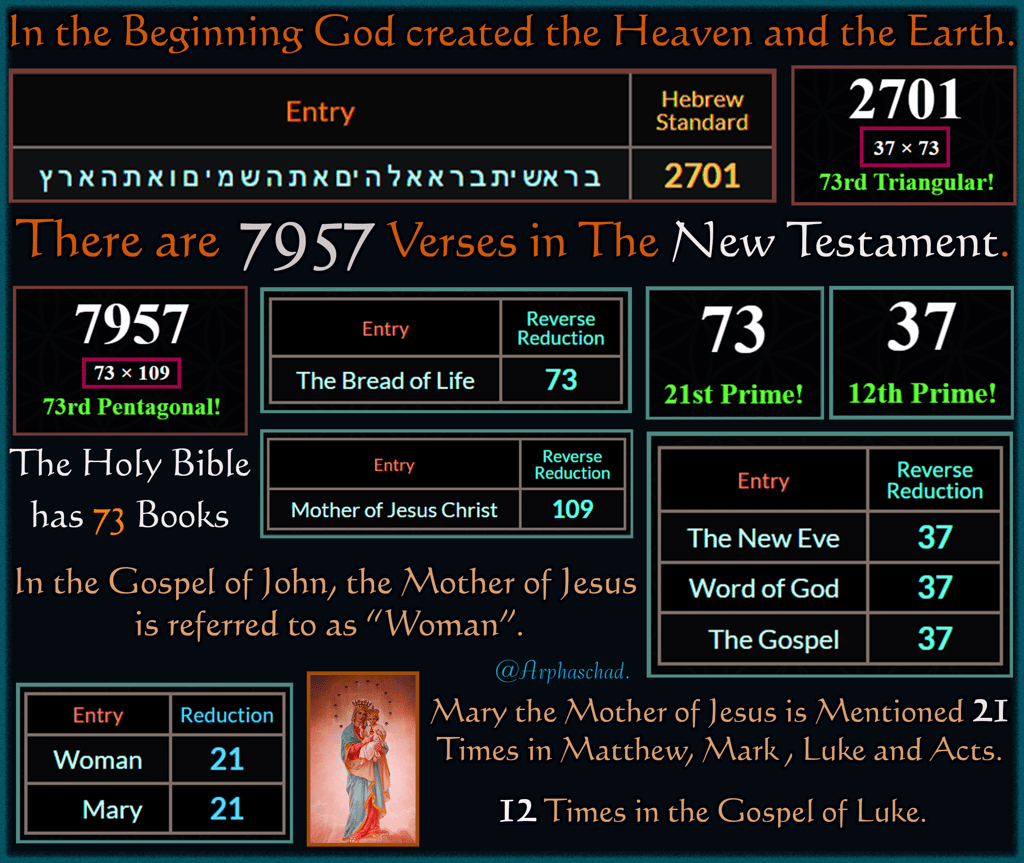





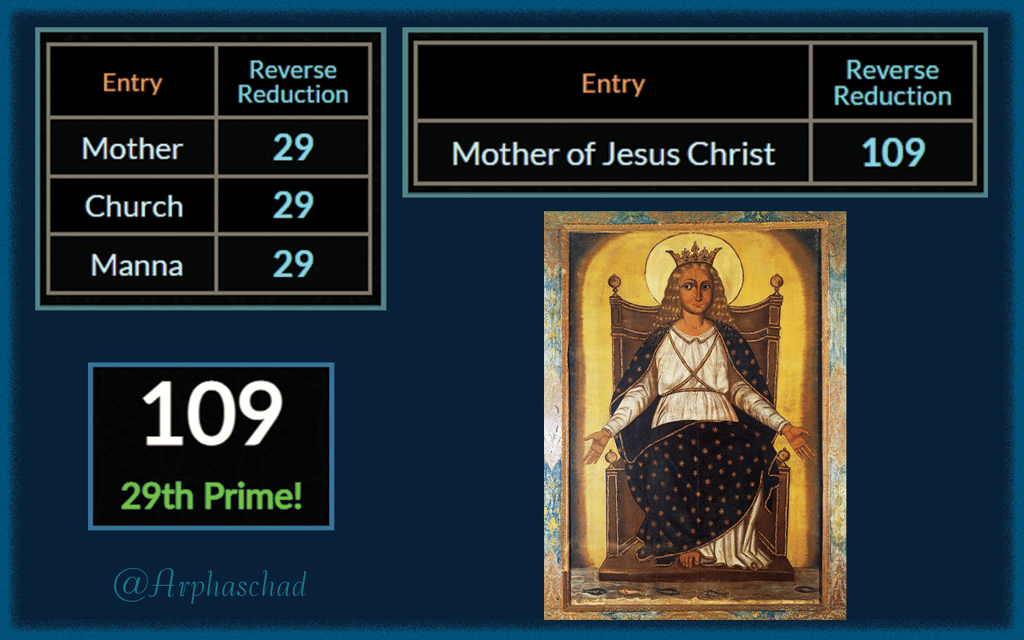

John 6:30–35 (D-R)
30 They said therefore to him: What sign therefore dost thou shew that we may see and may believe thee? What dost thou work?
31 Our fathers did eat manna in the desert, as it is written: He gave them bread from heaven to eat.
32 Then Jesus said to them: Amen, amen, I say to you; Moses gave you not bread from heaven, but my Father giveth you the true bread from heaven.
33 For the bread of God is that which cometh down from heaven and giveth life to the world.
34 They said therefore unto him: Lord, give us always this bread.
35 And Jesus said to them: I am the bread of life. He that cometh to me shall not hunger: and he that believeth in me shall never thirst.
John 1:1–3 (D-R)
IN the beginning was the Word: and the Word was with God: and the Word was God.
2 The same was in the beginning with God.
3 All things were made by him: and without him was made nothing that was made.
The first three words are taken verbatim from the very first line of Genesis, “In the beginning God created the heavens and the earth” (Genesis 1:1), and the mention of creation two verses later continues this allusion.
New Creation Week
John connects the beginning of his Gospel to the creation story in another, subtler way: he narrates a succession of seven days, paralleling the seven days of creation in the first chapter of Genesis. While he never explicitly tells us he is doing this, he tips us off by marking the days that pass in his account. After he recounts John the Baptist's testimony about his identity, he says that the next story happened “the next day” (John 1:29), and he does this two more times (John 1:35, 43).
If we consider everything before the first instance of the phrase “the next day” to be the first day, the three that follow get us to day number four. Then, the very next story happens “on the third day,” which gets us to day number seven.
Finally, on the seventh day we get to the wedding at Cana, which calls to mind the first married couple, Adam and Eve (Genesis 2:21-25), the only human characters in the creation stories of Genesis.
The New Eve
With all these points of contact with the Old Testament's stories of the world's creation, John is subtly telling us that Jesus' ministry inaugurated the new creation, the restoration of everything that Adam and Eve messed up by eating from the forbidden tree. Moreover, while the final story in his new creation week takes place at a wedding, John never says who the bride and groom are. Instead, the only characters whose identities we know are Jesus and his mother, and that is highly significant.
Since the wedding setting calls to mind Adam and Eve, the world's first married couple, this mysterious lack of any other identifiable characters tells us that Jesus and Mary are themselves the new Adam and Eve of this new creation. Jesus is the head of the new humanity, just as Adam was the head of the old, sinful humanity (Romans 5:12-19; 1 Corinthians 15:22, 45), and just as Eve played a key role in our Fall by eating the forbidden fruit and then giving it to Adam, so too did Mary play a key role in our redemption by giving birth to our savior and by prompting him to perform his first miracle and thus begin his public ministry (John 2:11).
Once we realize this, we can understand why Jesus calls his mother “woman” in this story. In the creation accounts, Eve is called “woman” more often than she is called “Eve” (for example, Genesis 2:22-23), so in the wedding at Cana, the name clearly harkens back to her. By calling his mother “woman,” Jesus is confirming for us that she really is the new Eve, his counterpart as the new Adam.
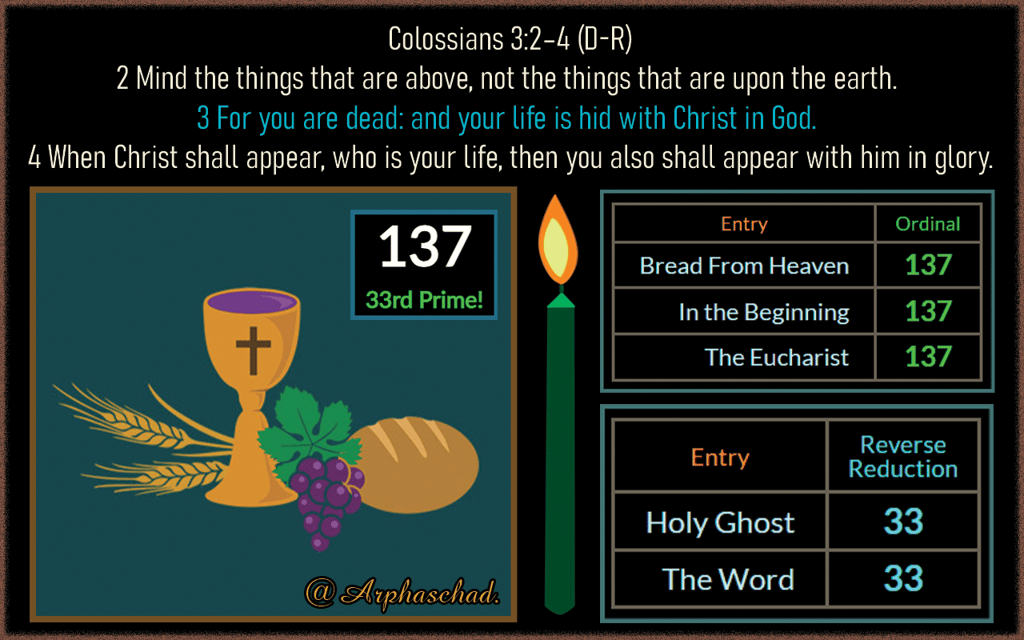

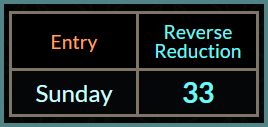

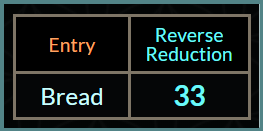

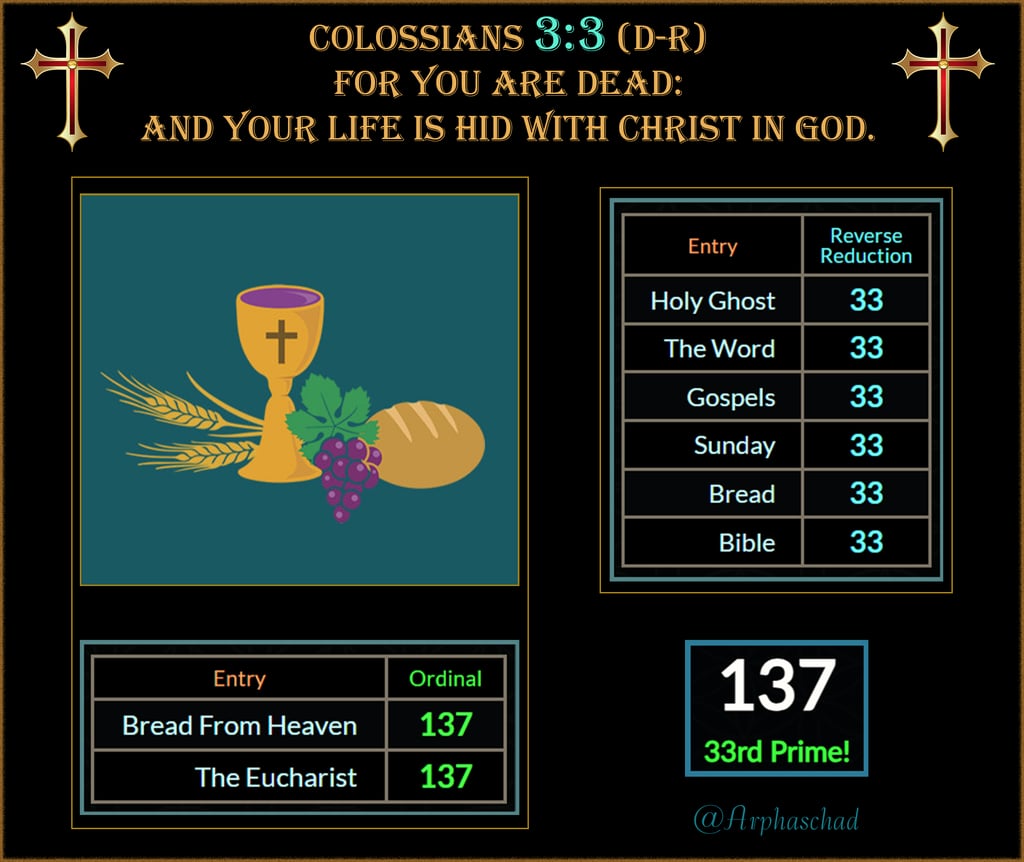


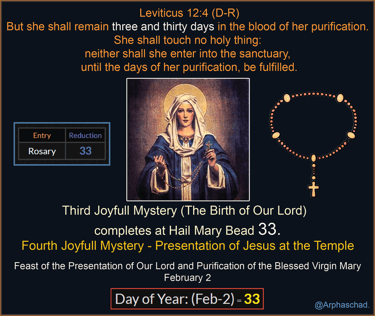




Queen Elizabeth II died September 8th 2022
Queen Elizabeth II Mother died at age 101.
Queen Elizabeth II Funeral : September 19, 2022
That is the 262nd Day of the Year.
